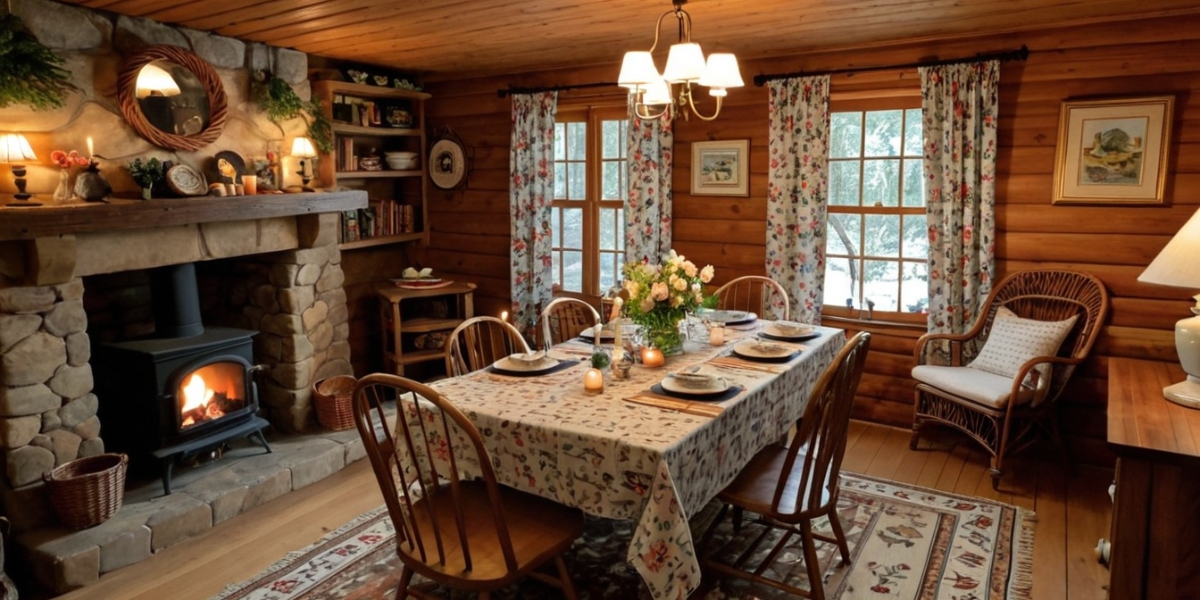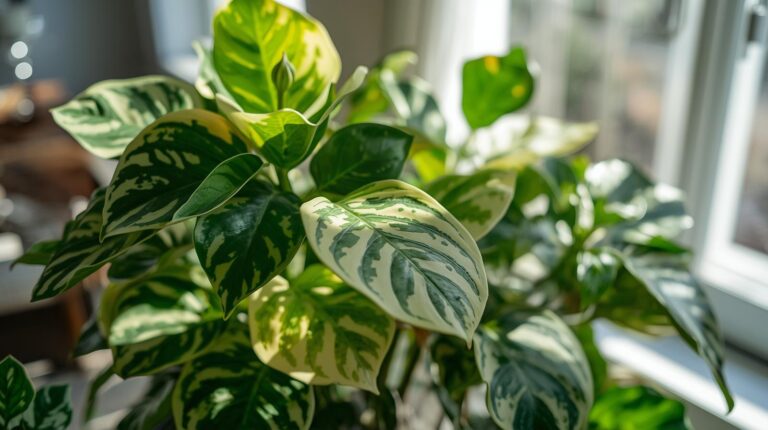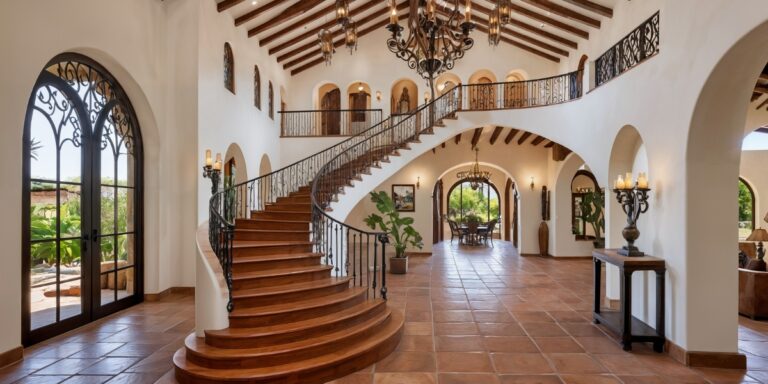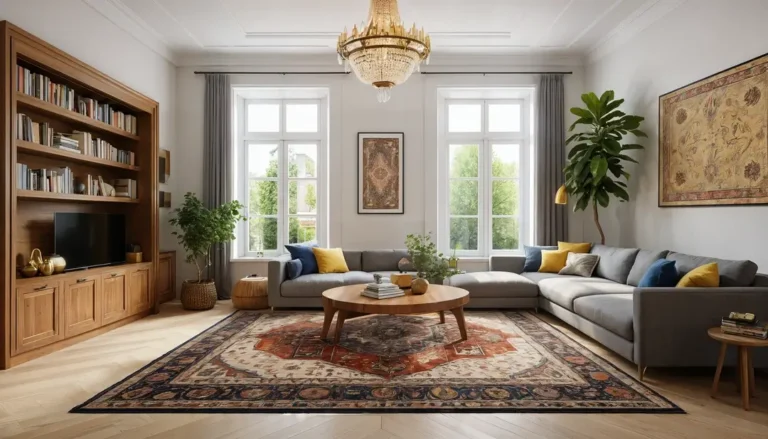In my experience working with homeowners on small cabin interior projects, I’ve observed that successful cabin design often balances coziness with practical style considerations for compact living spaces. Through various cabin design consultations, I’ve learned that effective small space interiors typically require careful planning to maximize functionality while maintaining the warm, inviting atmosphere that defines cabin living.
Note: For any structural modifications, electrical work, or installations mentioned in this article, always consult with licensed professionals to ensure safety and code compliance.
What makes small cabin interior design particularly appealing is its ability to create intimate, welcoming environments that make efficient use of limited square footage. I’ve found that homeowners often choose cabin aesthetics because they typically provide the comfortable, retreat-like atmosphere that encourages relaxation and connection with natural surroundings.
The key to successful small cabin design often lies in selecting space-efficient furnishings and storage solutions while incorporating design elements that reflect personal style preferences. Effective cabin interior solutions typically combine functional furniture, appropriate lighting, and cohesive color schemes that enhance the sense of space.
Here are 25 approaches for small cabin interior design that often work well in different cabin styles and climates, based on observations from various compact living projects.
1. Rustic Wooden Design with Minimalist Elements
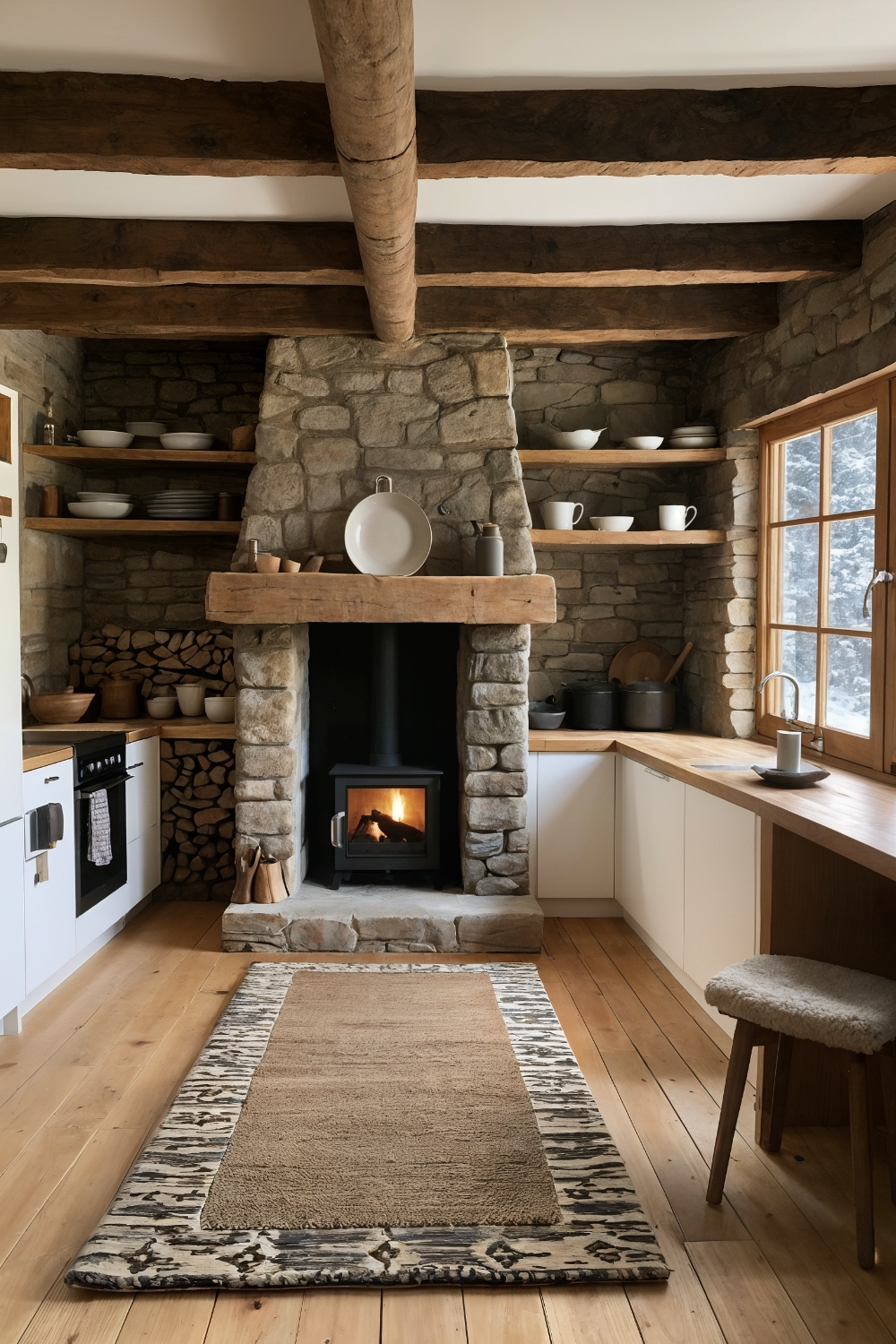
This traditional approach often appeals to homeowners wanting authentic cabin aesthetics with uncluttered simplicity. Exposed wooden beam construction paired with neutral furnishings typically creates the warm foundation enhanced by stone fireplace installations and natural fiber rugs.
Design consideration: Open shelving with earthenware dishes often provides practical storage while large windows require appropriate treatments for privacy and energy efficiency.
Practical benefit: Rustic minimalist design often reduces visual clutter while creating the timeless cabin atmosphere that maintains appeal across changing design trends.
2. Modern Scandinavian-Influenced Style
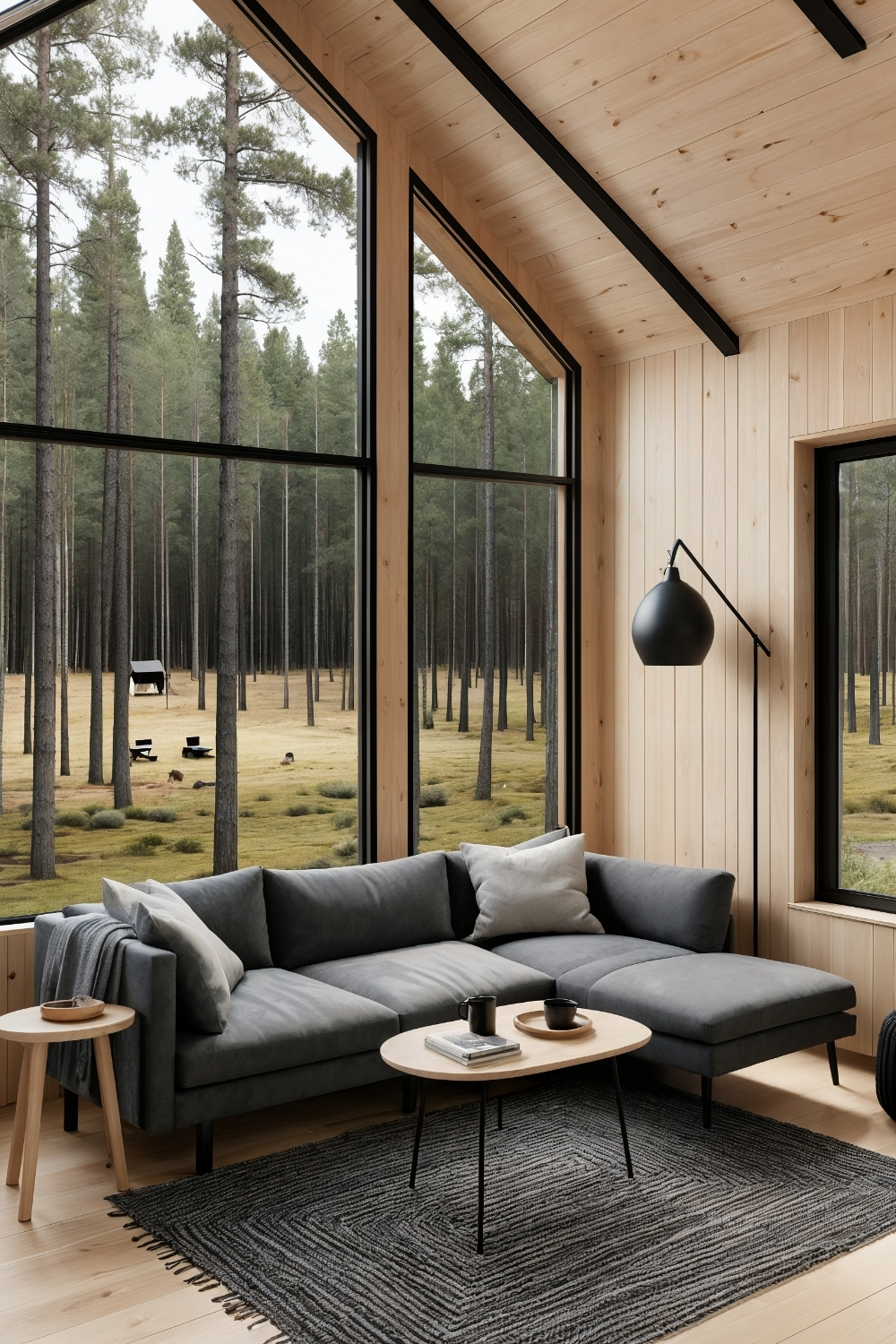
This contemporary approach often appeals to homeowners wanting sleek aesthetics with natural material integration. Light pine wall treatments paired with black accent elements typically create the sophisticated foundation enhanced by minimalist furnishing choices and wool textile accents.
Design consideration: Large window installations often maximize natural light while gray upholstery and simple furniture require durable, easy-care fabrics for cabin use.
Practical benefit: Scandinavian design often creates the airy feeling that makes small spaces appear larger while incorporating practical functionality for daily living.
3. Bohemian-Inspired Eclectic Design
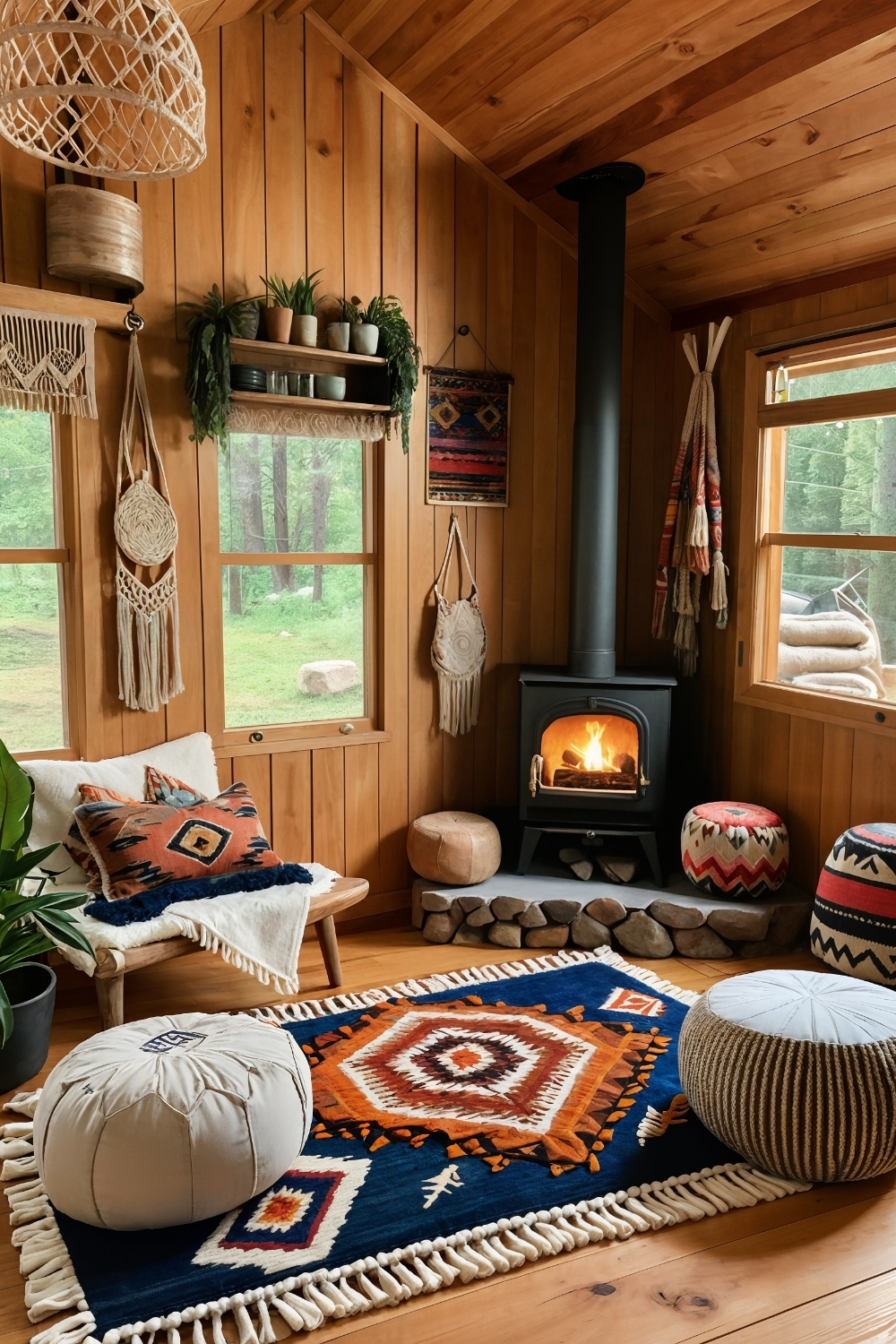
This creative approach often appeals to homeowners wanting artistic expression with layered, collected aesthetics. Vibrant pattern mixing paired with macramé wall decorations typically creates the personalized foundation enhanced by multiple area rugs and low-profile furniture arrangements.
Design consideration: Wood stove installations often require proper clearances and ventilation while indoor plants need adequate light and humidity management.
Practical benefit: Bohemian design often provides flexibility for personal expression while incorporating natural elements that create cozy, welcoming atmospheres.
4. Vintage Charm Aesthetic
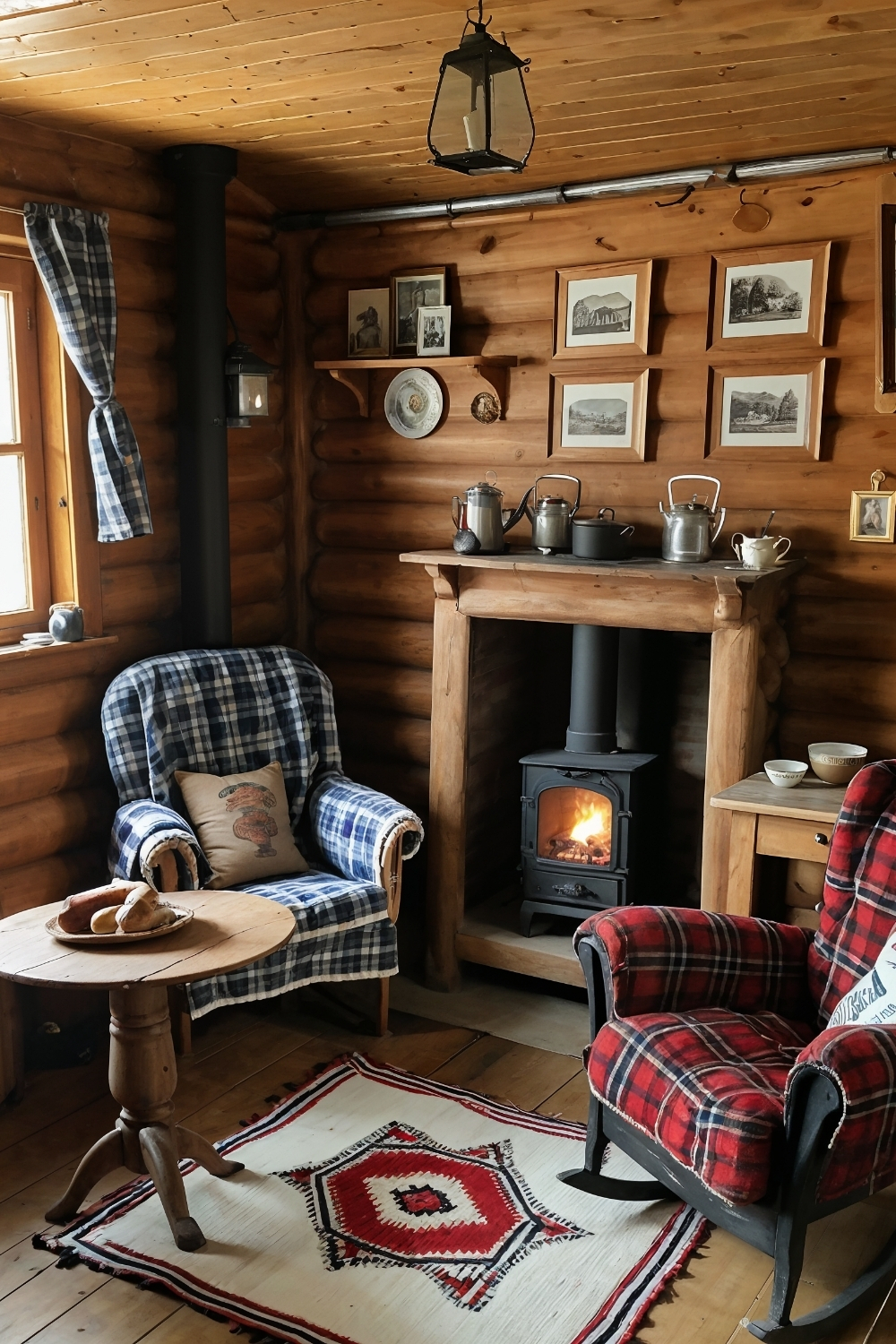
This nostalgic approach often appeals to homeowners wanting traditional cabin character with authentic period elements. Plaid upholstery paired with wood-burning stove installations typically creates the classic foundation enhanced by antique accessories and handmade textile elements.
Design consideration: Vintage furnishings often require restoration and reupholstering while wood-burning stoves need proper installation and regular maintenance for safety.
Practical benefit: Vintage cabin design often provides unique character while incorporating quality older pieces that offer durability and authentic charm.
5. Industrial-Inspired Urban Style
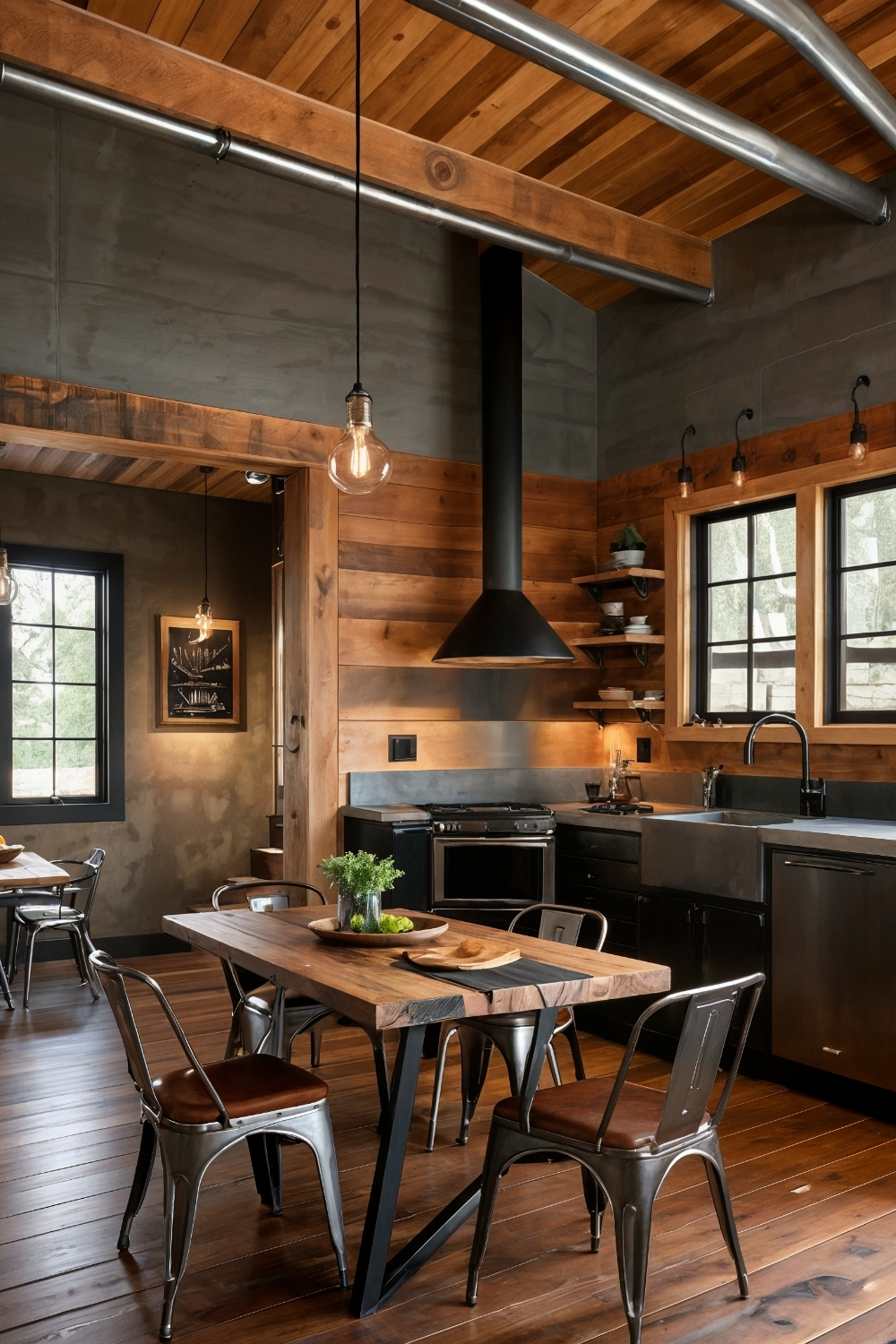
This contemporary approach often appeals to homeowners wanting edgy aesthetics with mixed material combinations. Metal and wood combinations paired with exposed infrastructure elements typically create the modern foundation enhanced by leather seating and concrete surface treatments.
Design consideration: Exposed pipes often require proper insulation in cold climates while reclaimed materials need inspection for structural integrity and safety.
Practical benefit: Industrial design often incorporates durable materials while creating the unique, urban-meets-cabin atmosphere that appeals to design-conscious owners.
6. Loft Bed Space Maximization
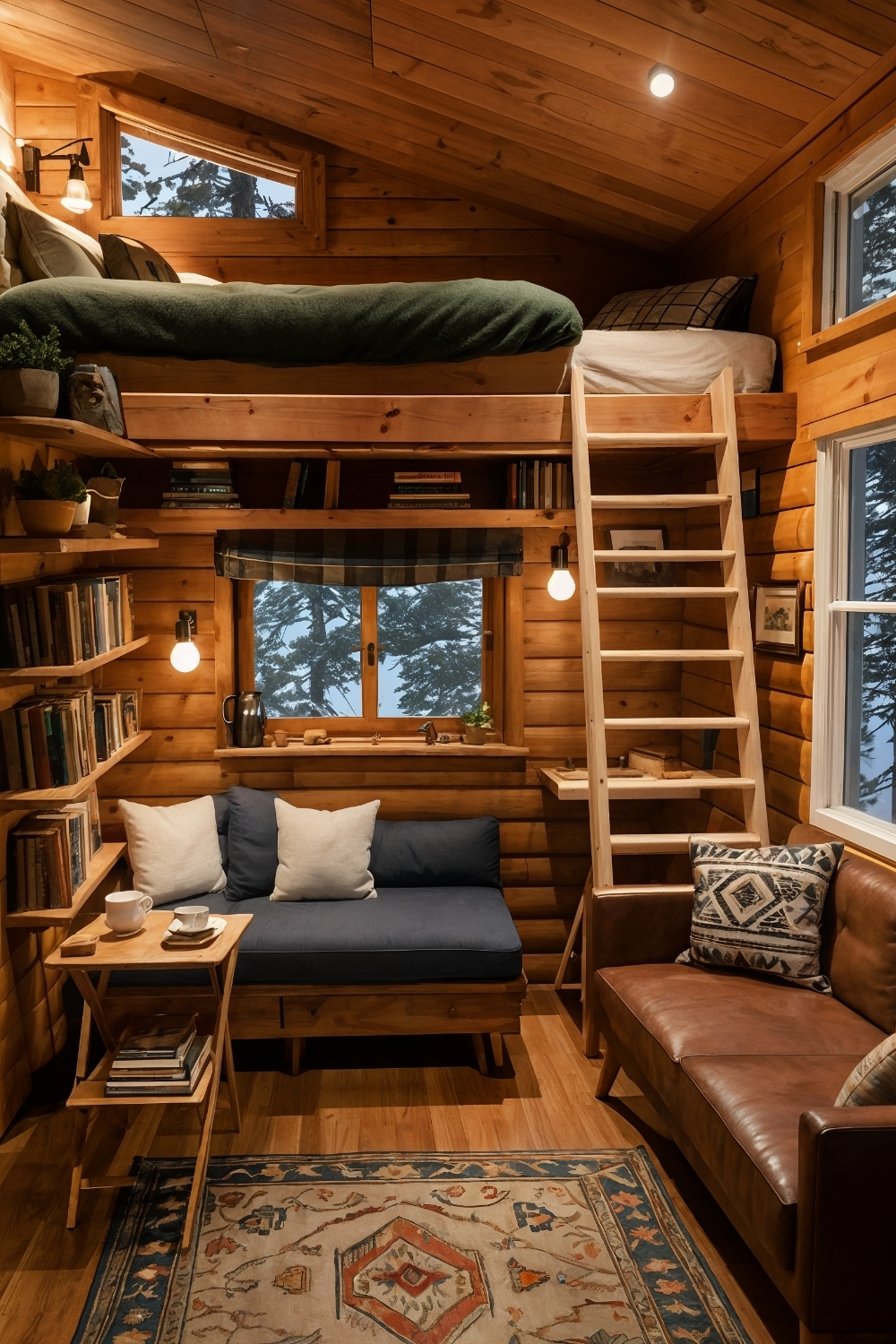
This vertical approach often appeals to homeowners wanting maximum floor space utilization with compact sleeping solutions. Lofted bed installations paired with multi-functional furniture typically create the efficient foundation enhanced by built-in storage and strategic lighting placement.
Design consideration: Loft bed construction often requires proper structural support while ladder access needs safe design and adequate clearance heights.
Practical benefit: Vertical space utilization often maximizes living areas while creating the cozy, nest-like sleeping spaces that define efficient cabin design.
7. A-Frame Geometric Architecture
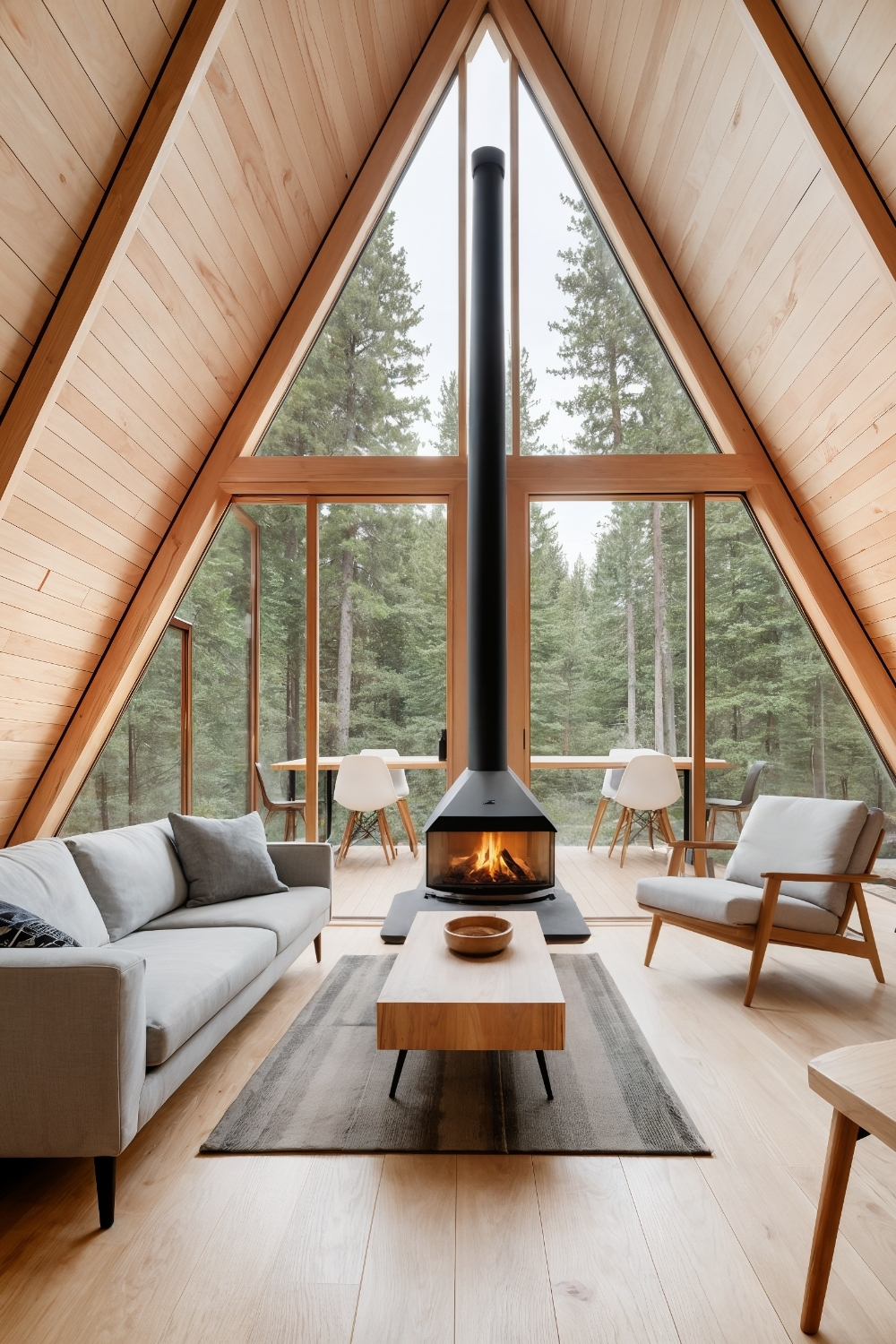
This distinctive approach often appeals to homeowners wanting iconic cabin architecture with dramatic interior proportions. Triangular structural elements paired with floor-to-ceiling windows typically create the impressive foundation enhanced by modern furnishings and neutral color palettes.
Design consideration: Large window installations often require energy-efficient glazing while central fireplace placement needs proper ventilation and safety clearances.
Practical benefit: A-frame design often provides the dramatic architectural character while maximizing natural light and creating memorable interior spaces.
8. Built-In Storage Integration
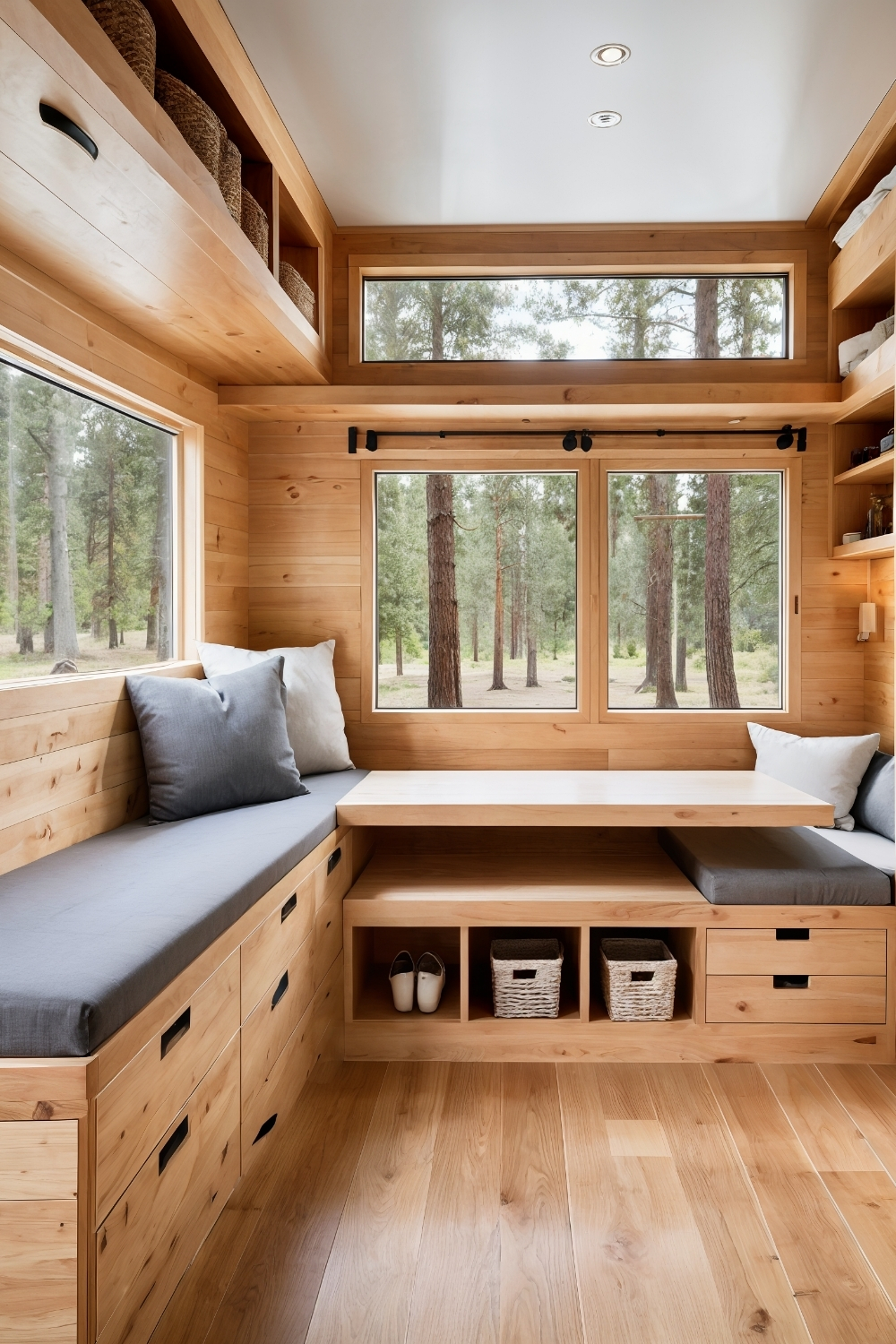
This efficiency-focused approach often appeals to homeowners wanting maximum organization with custom storage solutions. Built-in cabinetry paired with hidden storage compartments typically creates the functional foundation enhanced by light-colored wood treatments and clutter-free organization.
Design consideration: Custom cabinetry often requires precise measurements and professional installation while hidden storage needs accessible hardware and proper ventilation.
Practical benefit: Built-in storage often maximizes space efficiency while creating the organized, uncluttered atmosphere that makes small cabins feel more spacious.
9. Farmhouse-Style Comfort
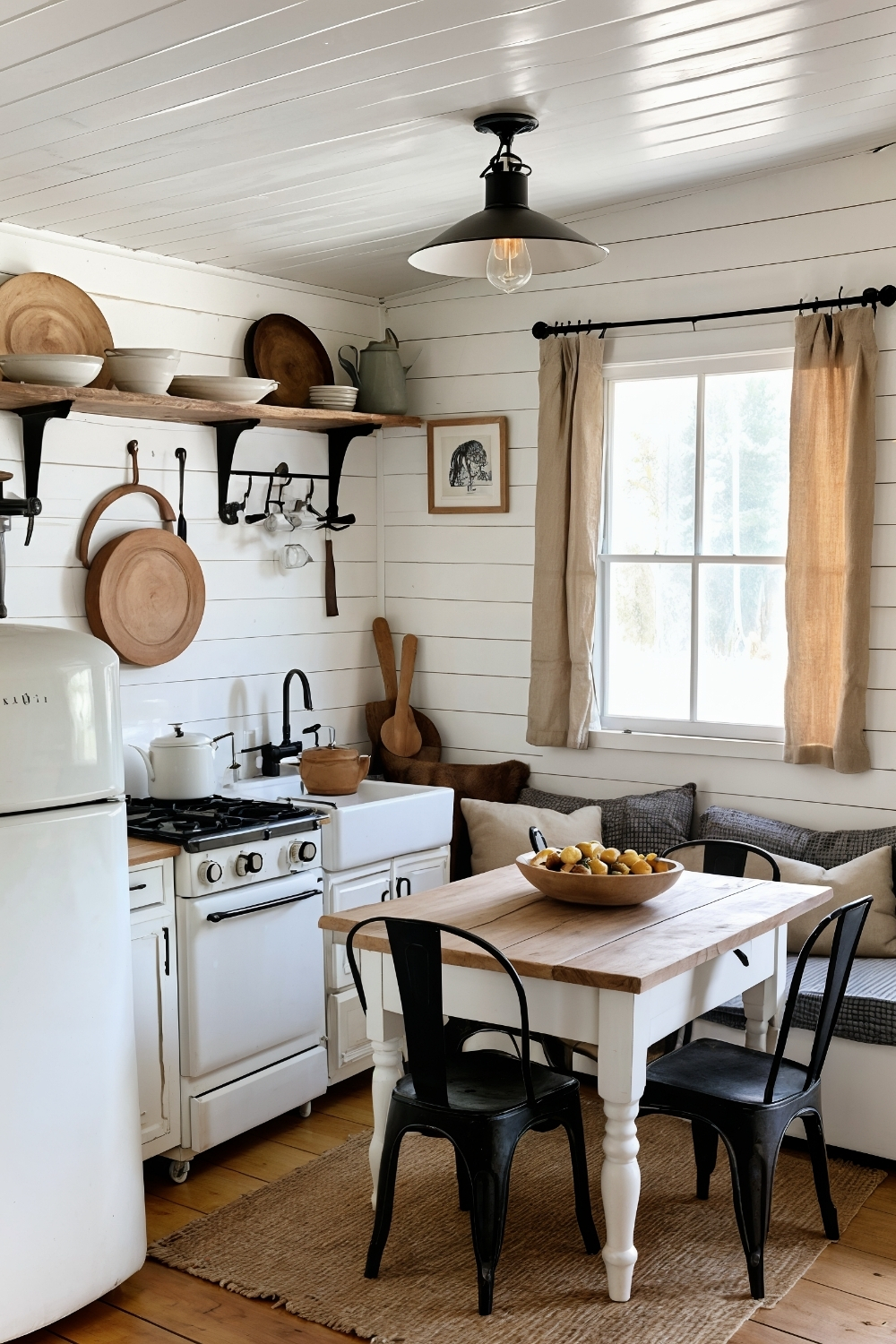
This traditional approach often appeals to homeowners wanting classic rural aesthetics with comfortable, lived-in character. Whitewashed wall treatments paired with farmhouse sink installations typically create the authentic foundation enhanced by cast-iron heating elements and natural fabric selections.
Design consideration: Farmhouse sinks often require proper support and plumbing considerations while wood stoves need adequate ventilation and fire safety measures.
Practical benefit: Farmhouse design often provides the comfortable, welcoming atmosphere while incorporating practical elements that support daily cabin living.
10. Dark Wood Dramatic Aesthetics
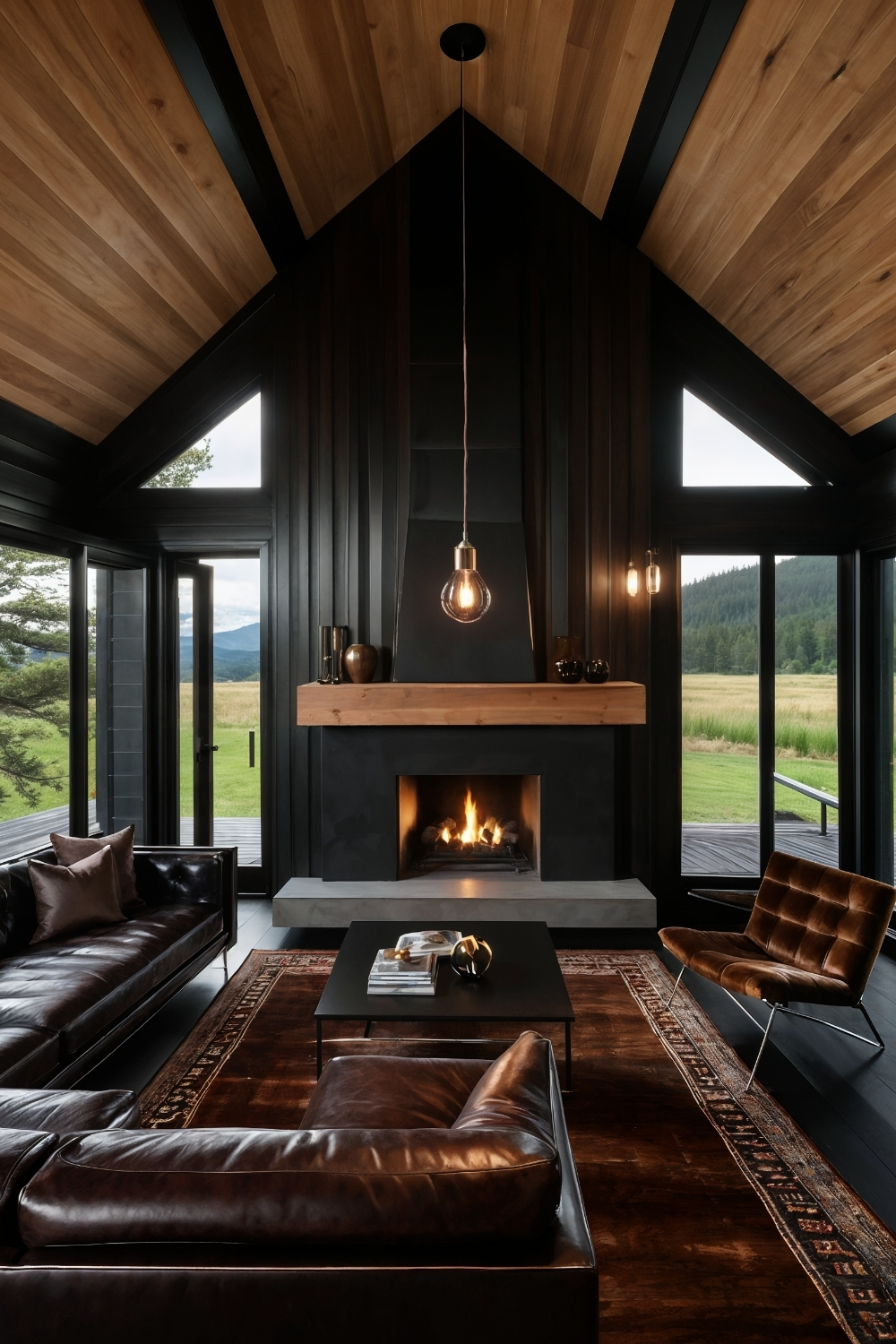
This sophisticated approach often appeals to homeowners wanting intimate atmospheres with rich, moody design elements. Dark wood wall treatments paired with deep-colored furnishings typically create the dramatic foundation enhanced by strategic lighting and luxurious textile choices.
Design consideration: Dark interiors often require additional artificial lighting while deep-colored furniture needs quality construction to justify investment in dramatic pieces.
Practical benefit: Dark cabin interiors often create the cozy, intimate atmosphere ideal for relaxation while providing sophisticated alternatives to traditional light cabin aesthetics.
11. Nature-Integrated Design
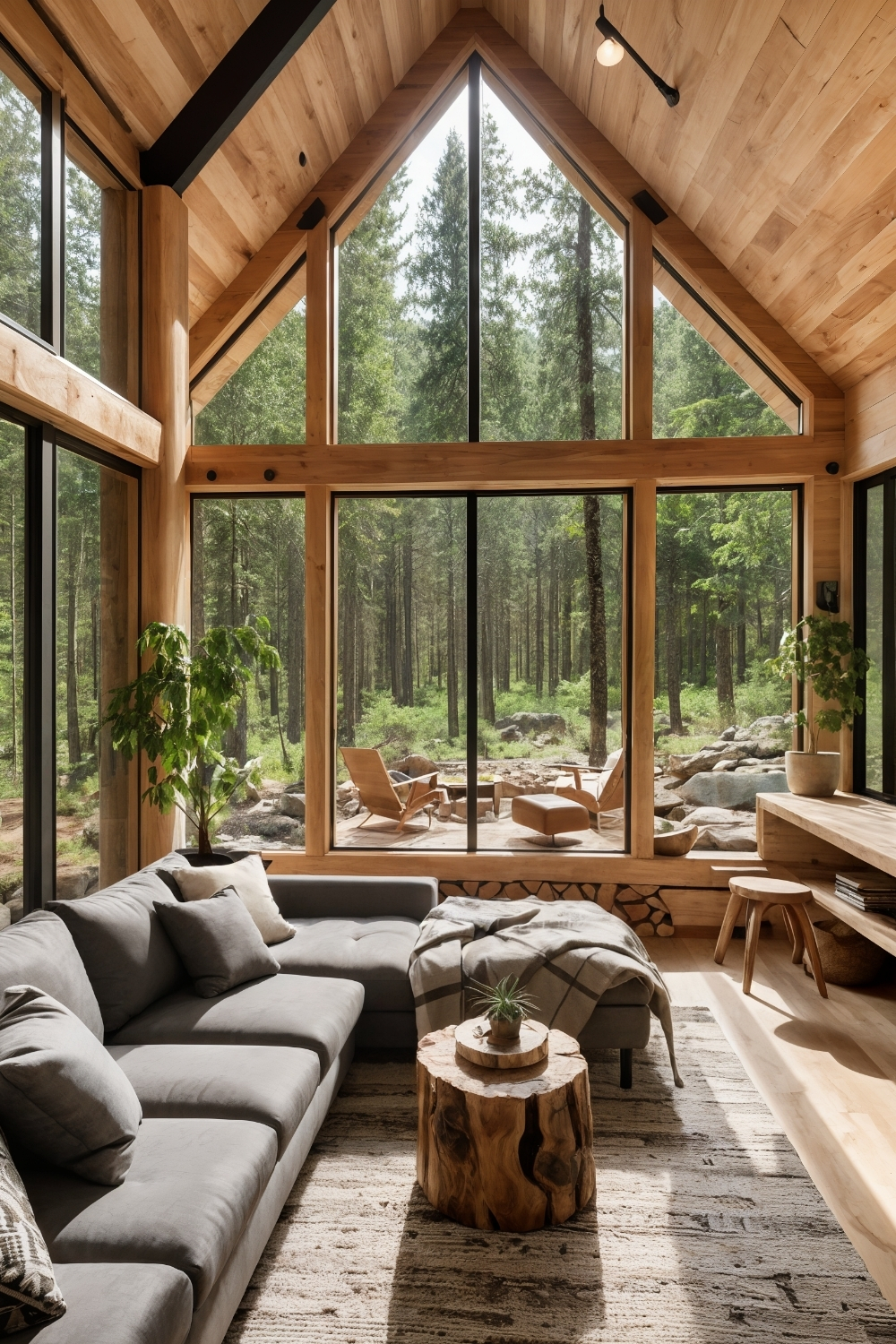
This organic approach often appeals to homeowners wanting seamless connections with outdoor environments through natural material emphasis. Stone and reclaimed wood combinations typically create the authentic foundation enhanced by large windows and indoor plant integration.
Design consideration: Natural materials often require proper treatments for indoor use while large windows need energy-efficient glazing and appropriate window treatments.
Practical benefit: Nature-inspired design often creates the harmonious connection with surroundings while incorporating sustainable materials that support environmentally conscious living.
12. Mid-Century Modern Style
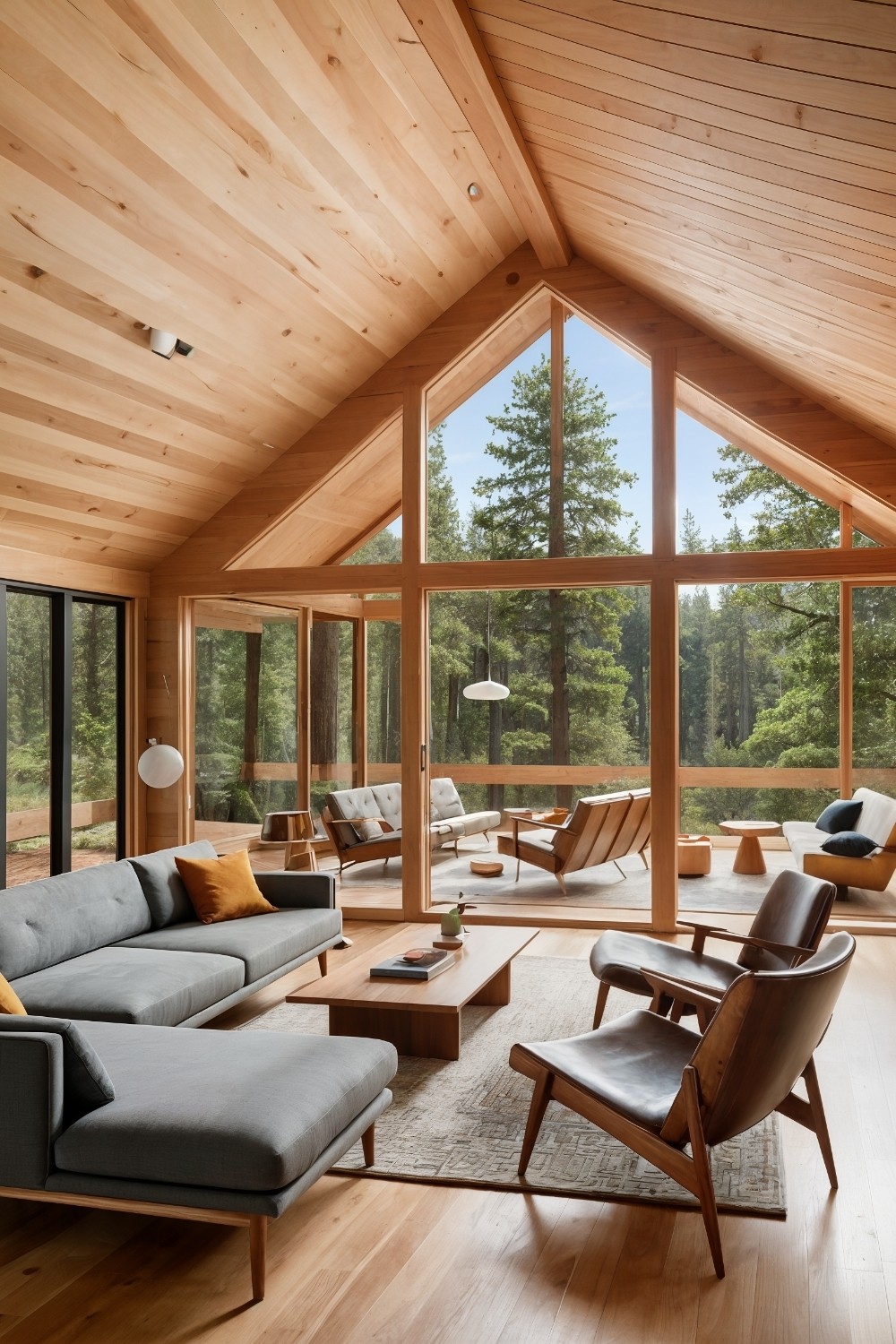
This retro approach often appeals to homeowners wanting clean-lined aesthetics with iconic furniture choices. Low-profile seating paired with large window installations typically creates the sophisticated foundation enhanced by natural wood tones and minimalist organization.
Design consideration: Mid-century furniture often requires quality reproductions or restored originals while large windows need proper solar heat management.
Practical benefit: Mid-century modern design often provides the timeless sophistication while incorporating functional furniture that works well in small cabin spaces.
13. Minimalist All-White Aesthetic
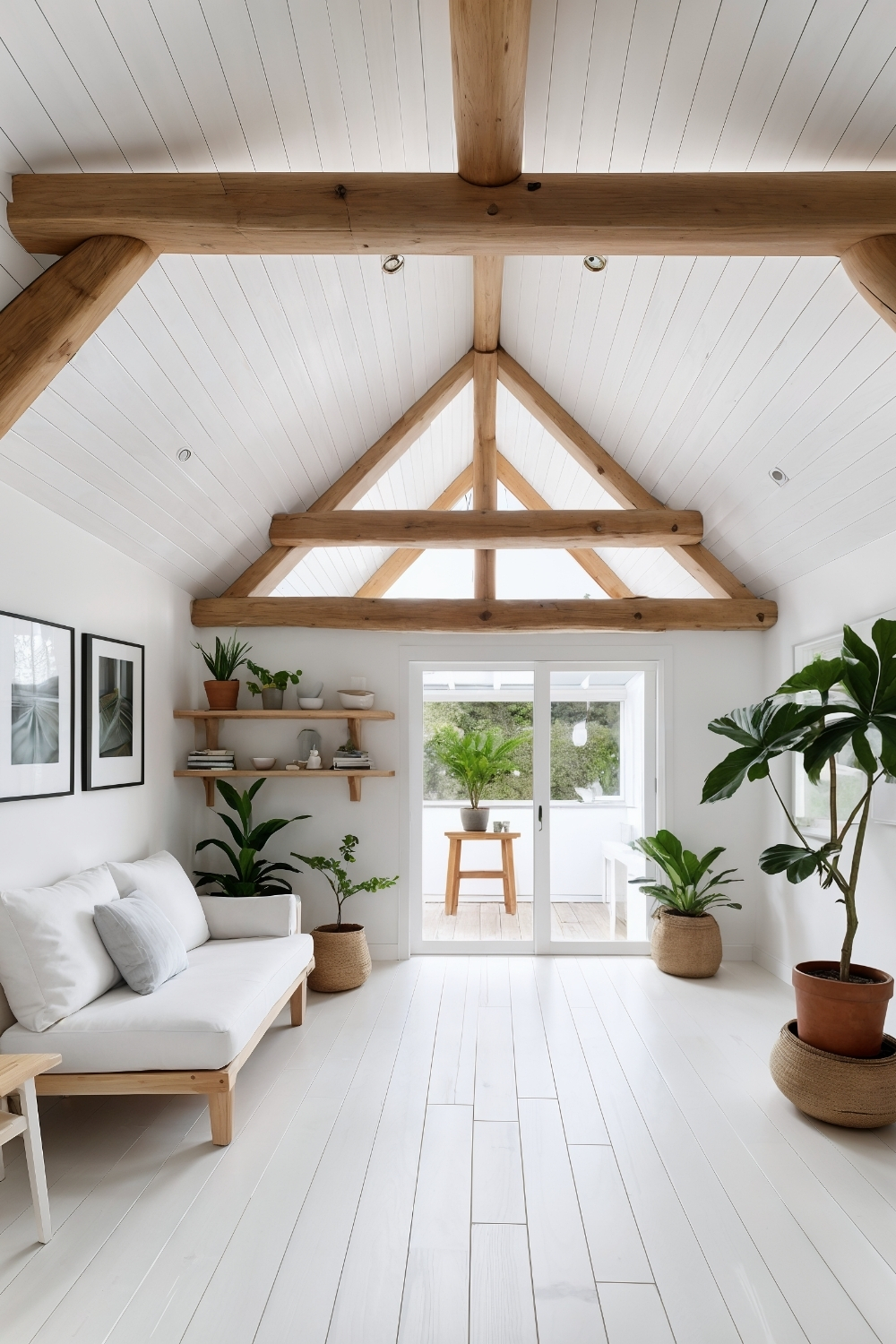
This purity-focused approach often appeals to homeowners wanting bright, serene environments with maximum light reflection. White wood treatments paired with sleek furnishing choices typically create the peaceful foundation enhanced by exposed structural elements and uncluttered organization.
Design consideration: All-white interiors often require higher maintenance and careful material selection while exposed beams need proper finishing for durability.
Practical benefit: White minimalist design often maximizes apparent space size while creating the calm, peaceful atmosphere that supports relaxation and contemplation.
14. Hygge-Inspired Coziness
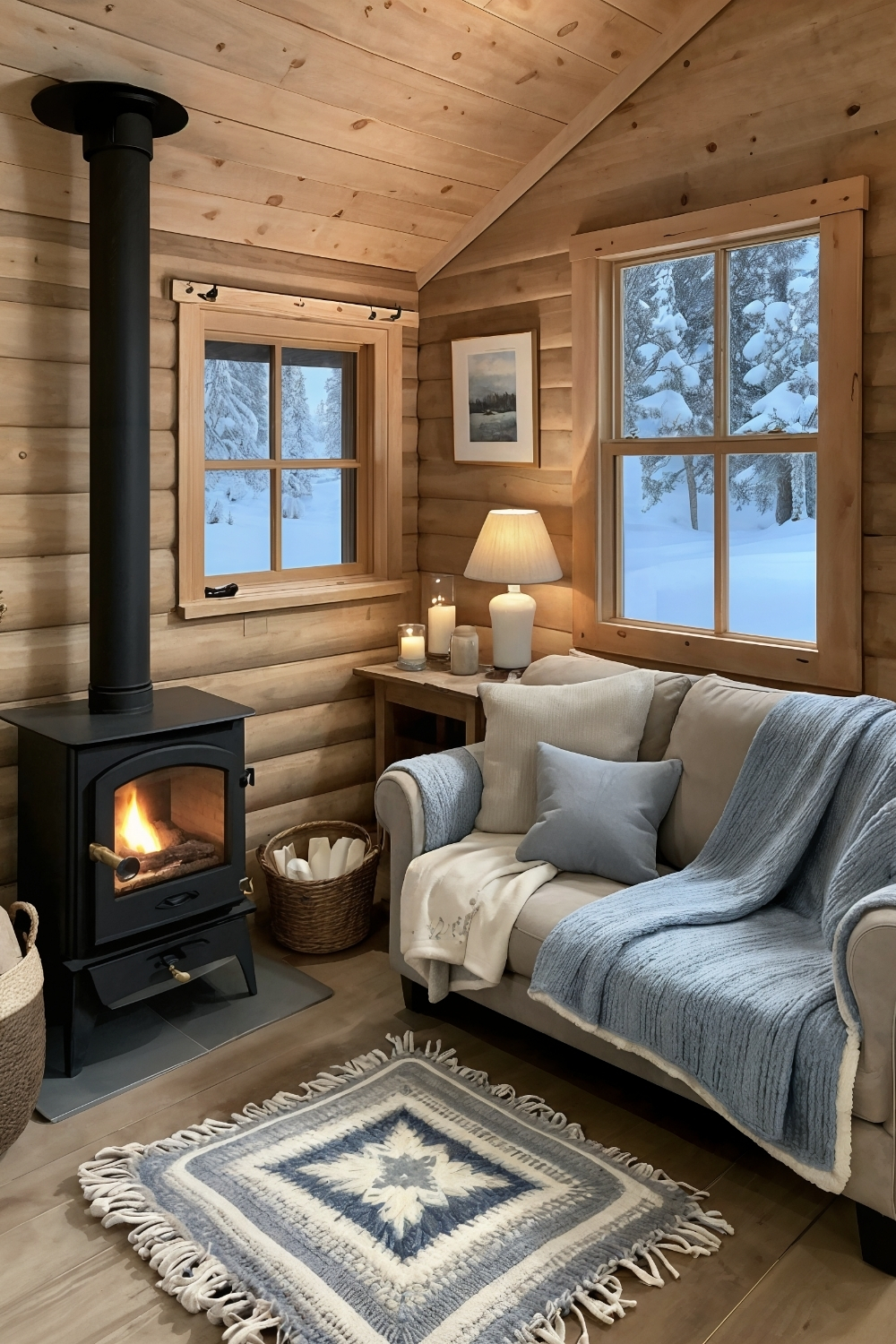
This comfort-focused approach often appeals to homeowners wanting ultimate coziness with Danish-inspired lifestyle elements. Soft textile layering paired with warm lighting installations typically creates the inviting foundation enhanced by small wood heating and neutral color schemes.
Design consideration: Multiple textile layers often require regular cleaning and storage while candle use needs fire safety considerations and adequate ventilation.
Practical benefit: Hygge design often creates the ultimate comfort atmosphere while incorporating simple elements that make small spaces feel particularly welcoming.
15. Reading Nook Integration
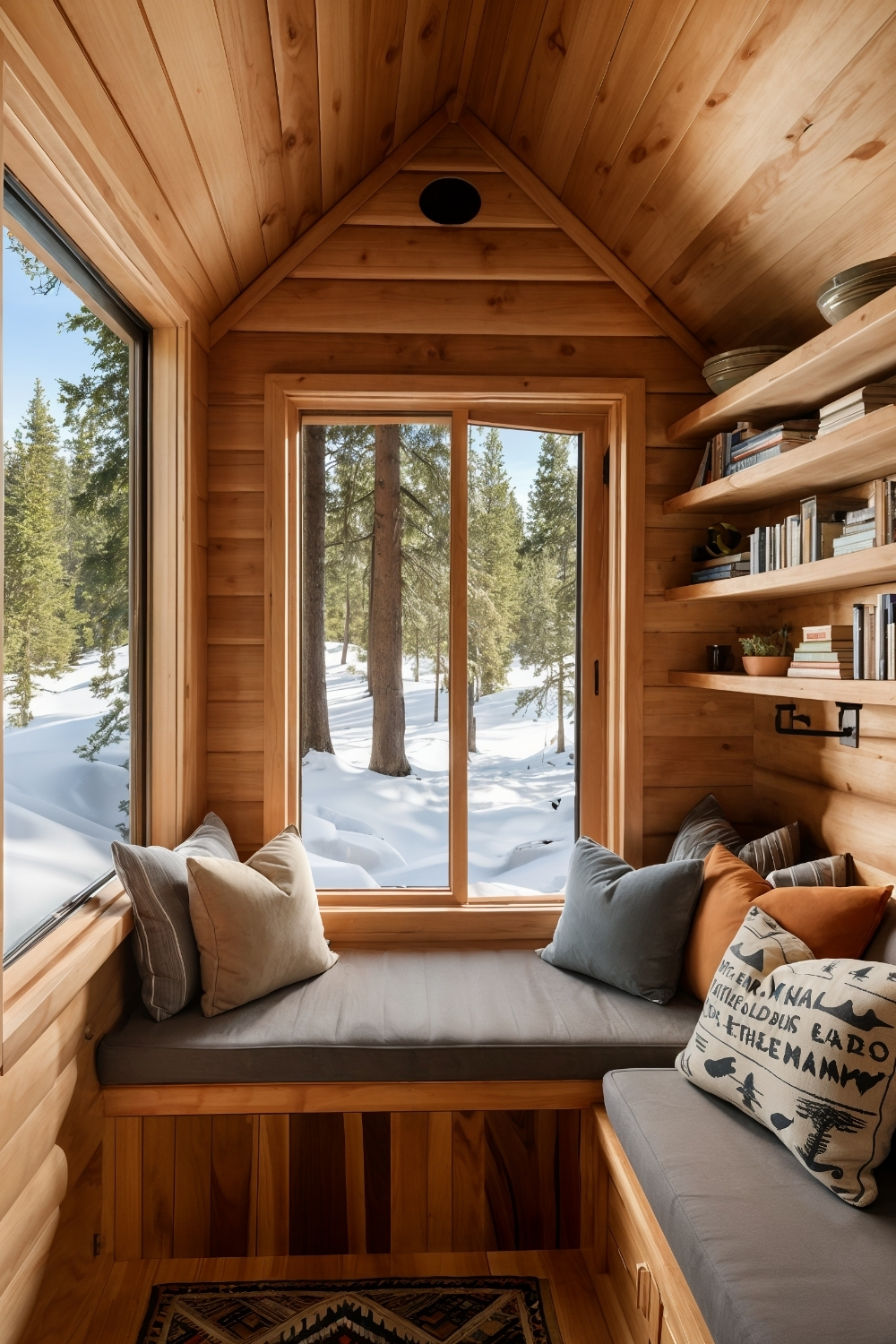
This comfort-focused approach often appeals to homeowners wanting dedicated relaxation spaces with built-in seating solutions. Window seat construction paired with soft furnishing layers typically creates the cozy foundation enhanced by compact kitchen integration and warm wood tones.
Design consideration: Built-in seating often requires proper structural support while window installations need energy efficiency and appropriate cushioning materials.
Practical benefit: Reading nook design often provides the dedicated relaxation space while maximizing natural light and creating intimate cabin atmospheres.
16. Open-Plan Entertainment Design
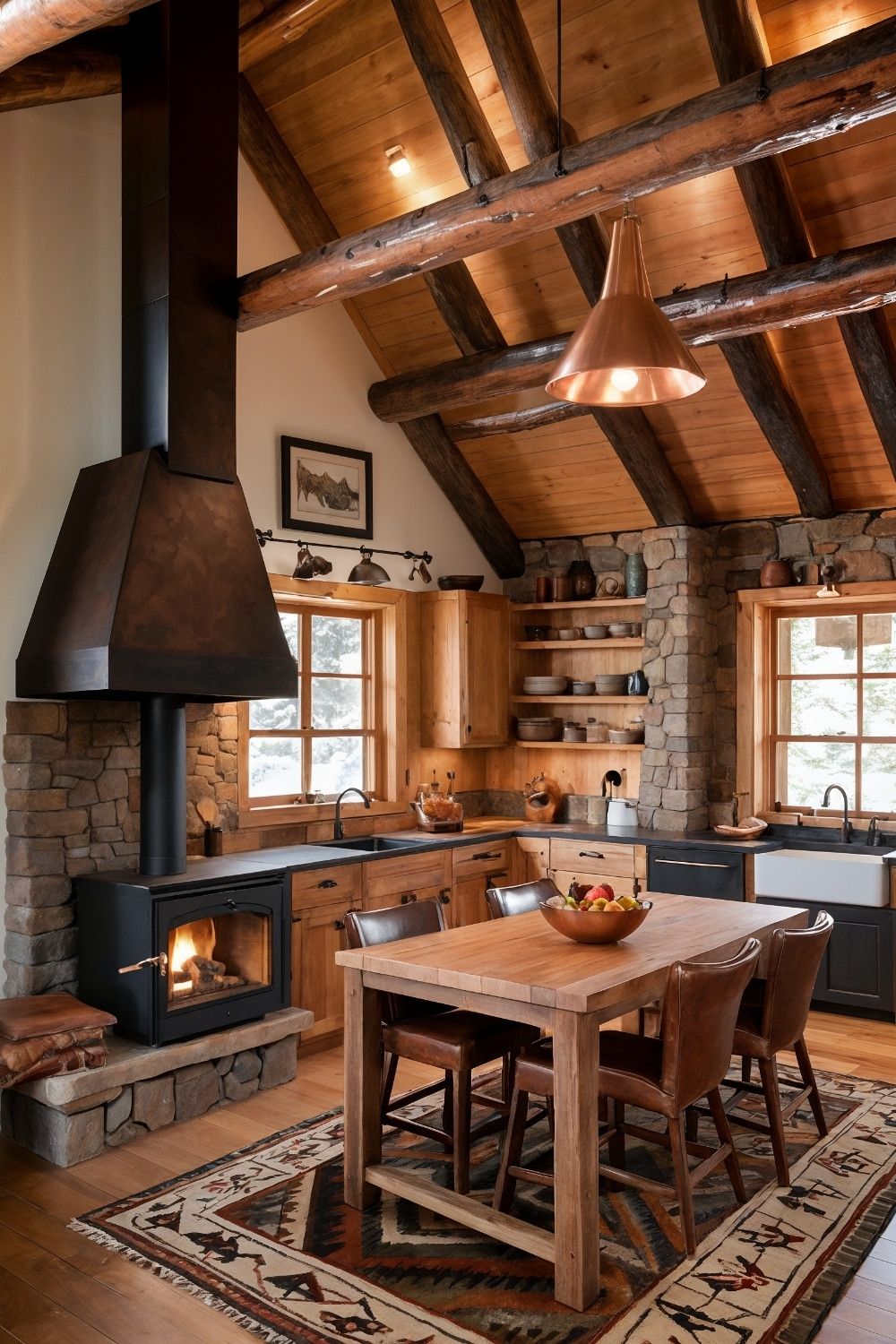
This social approach often appeals to homeowners wanting entertaining capabilities with rustic character elements. Exposed log construction paired with copper accent elements typically creates the authentic foundation enhanced by stone fireplace installations and comfortable seating arrangements.
Design consideration: Open-plan layouts often require careful furniture placement while copper elements need proper maintenance to prevent tarnishing.
Practical benefit: Open-plan cabin design often maximizes social interaction space while incorporating authentic materials that create impressive entertaining environments.
17. Smart Furniture Efficiency
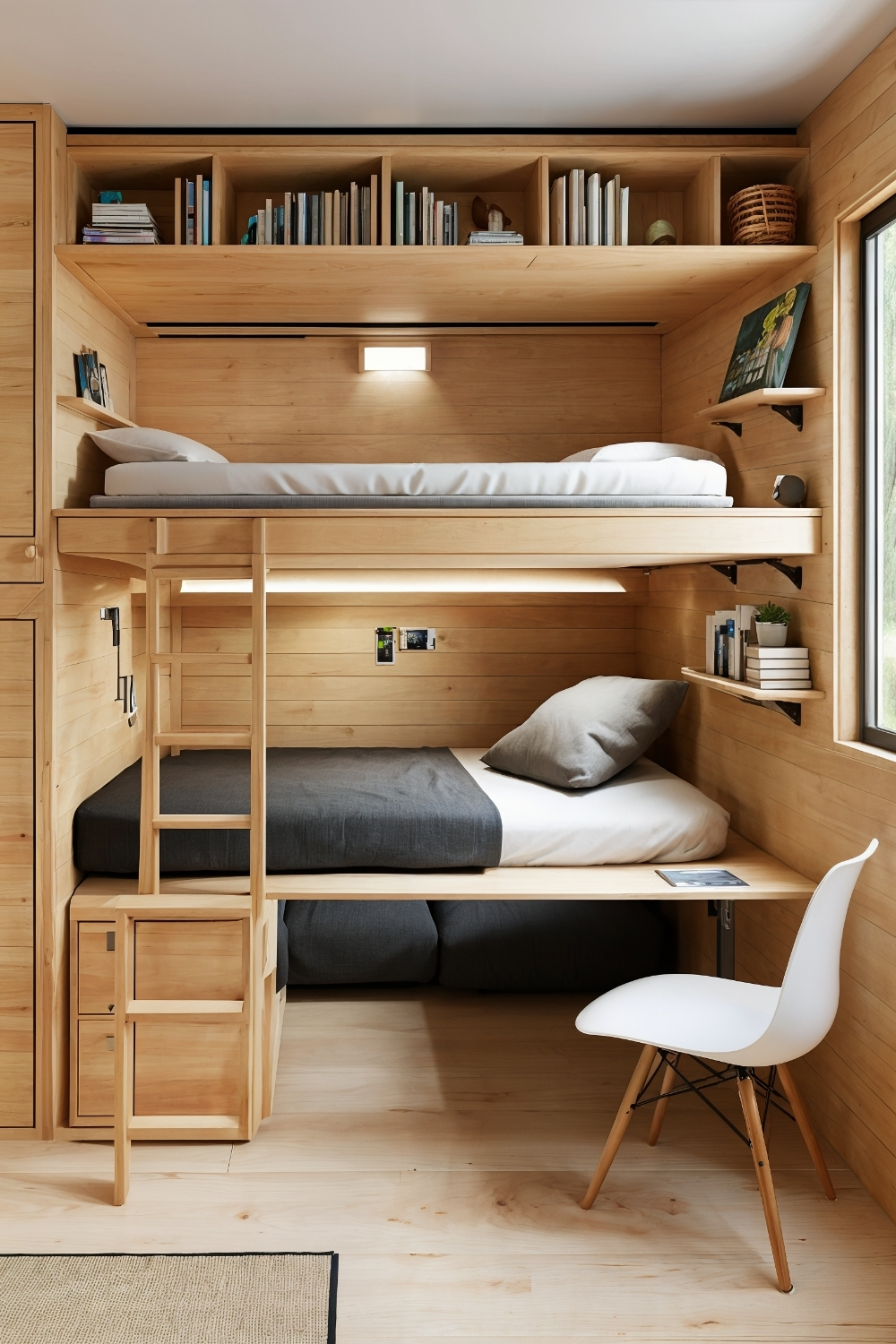
This innovation-focused approach often appeals to homeowners wanting maximum functionality with convertible furniture solutions. Multi-purpose pieces paired with wall-mounted elements typically create the efficient foundation enhanced by hidden storage and light wood treatments.
Design consideration: Convertible furniture often requires quality hardware and mechanisms while wall-mounted pieces need proper structural support for safety.
Practical benefit: Smart furniture design often maximizes space utility while providing the flexibility to adapt cabin layouts for different activities and needs.
18. Cottage-Style Charm
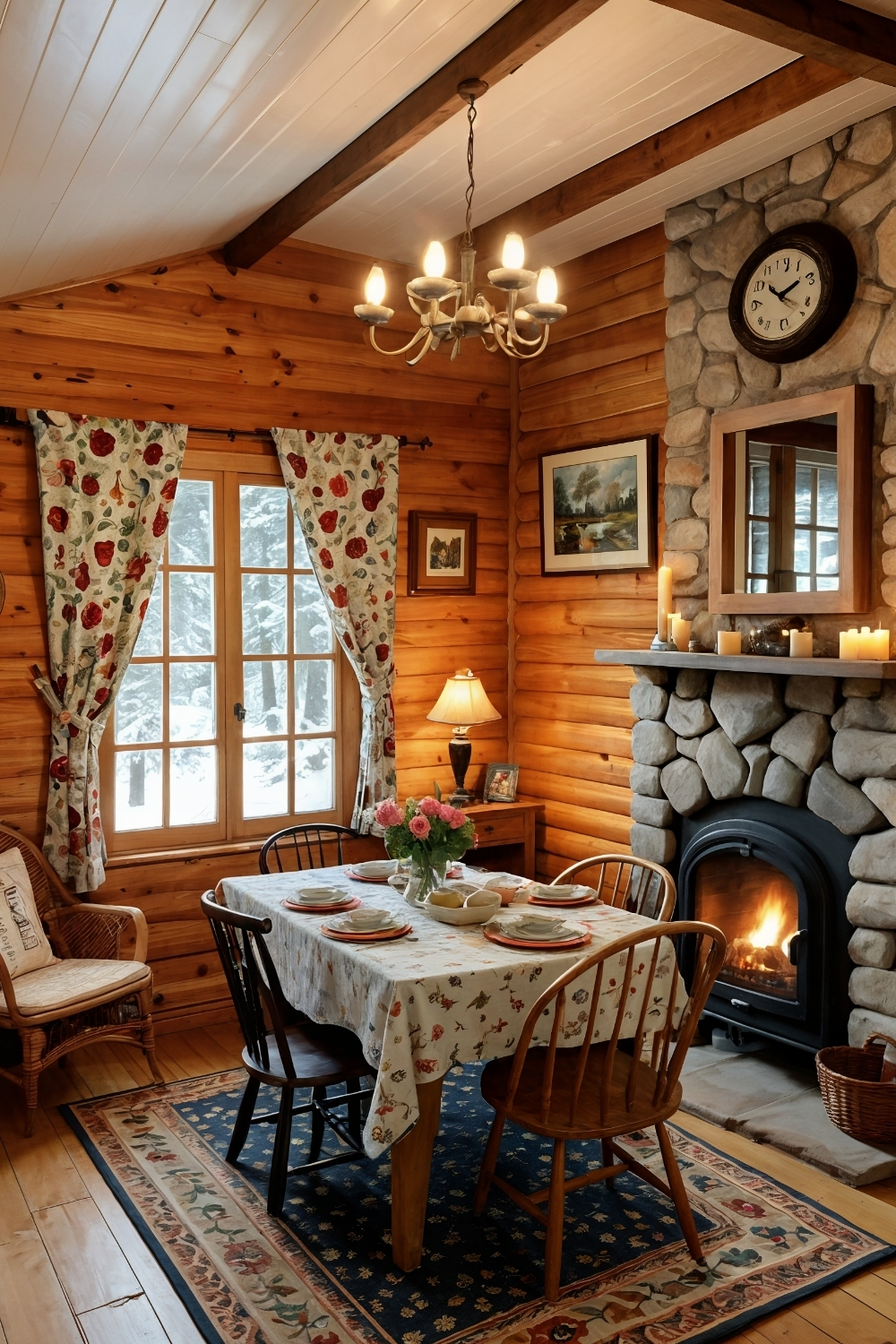
This traditional approach often appeals to homeowners wanting countryside aesthetics with floral and wicker elements. Vintage dining pieces paired with soft textile treatments typically create the charming foundation enhanced by fireplace comfort and layered lighting.
Design consideration: Floral patterns often require coordinated color schemes while wicker furniture needs protection from moisture and temperature extremes.
Practical benefit: Cottage design often creates the warm, welcoming atmosphere while incorporating comfortable elements that make cabins feel like homes.
19. Coastal-Inspired Lightness
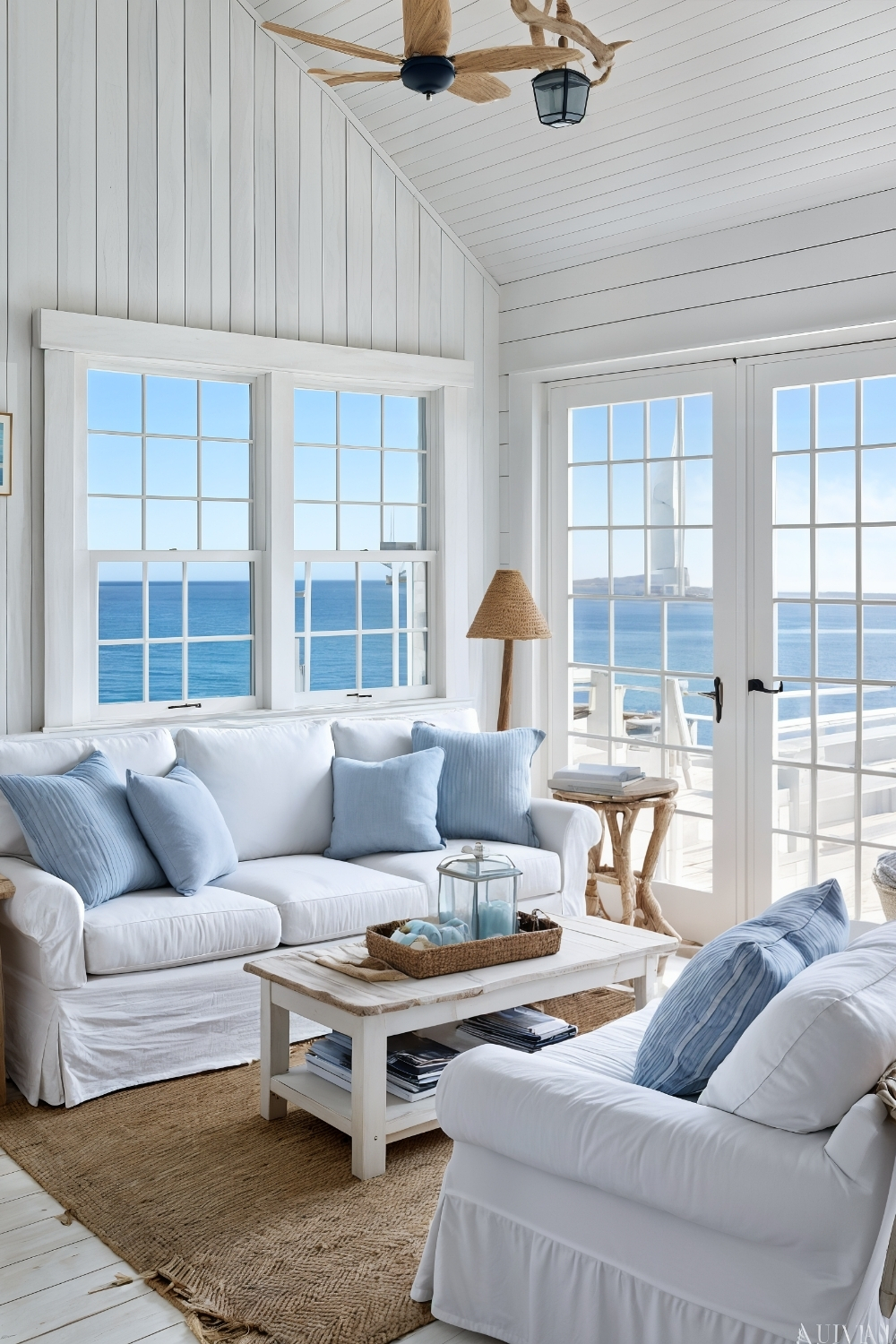
This beach-influenced approach often appeals to homeowners wanting bright, airy aesthetics with nautical accent elements. Whitewashed wood treatments paired with light blue color schemes typically create the serene foundation enhanced by large windows and natural decorative elements.
Design consideration: Coastal color schemes often work best with adequate natural light while nautical accessories need authentic materials for lasting appeal.
Practical benefit: Coastal cabin design often creates the relaxing, vacation-like atmosphere while incorporating light colors that make small spaces feel more open.
20. Central Fireplace Focus
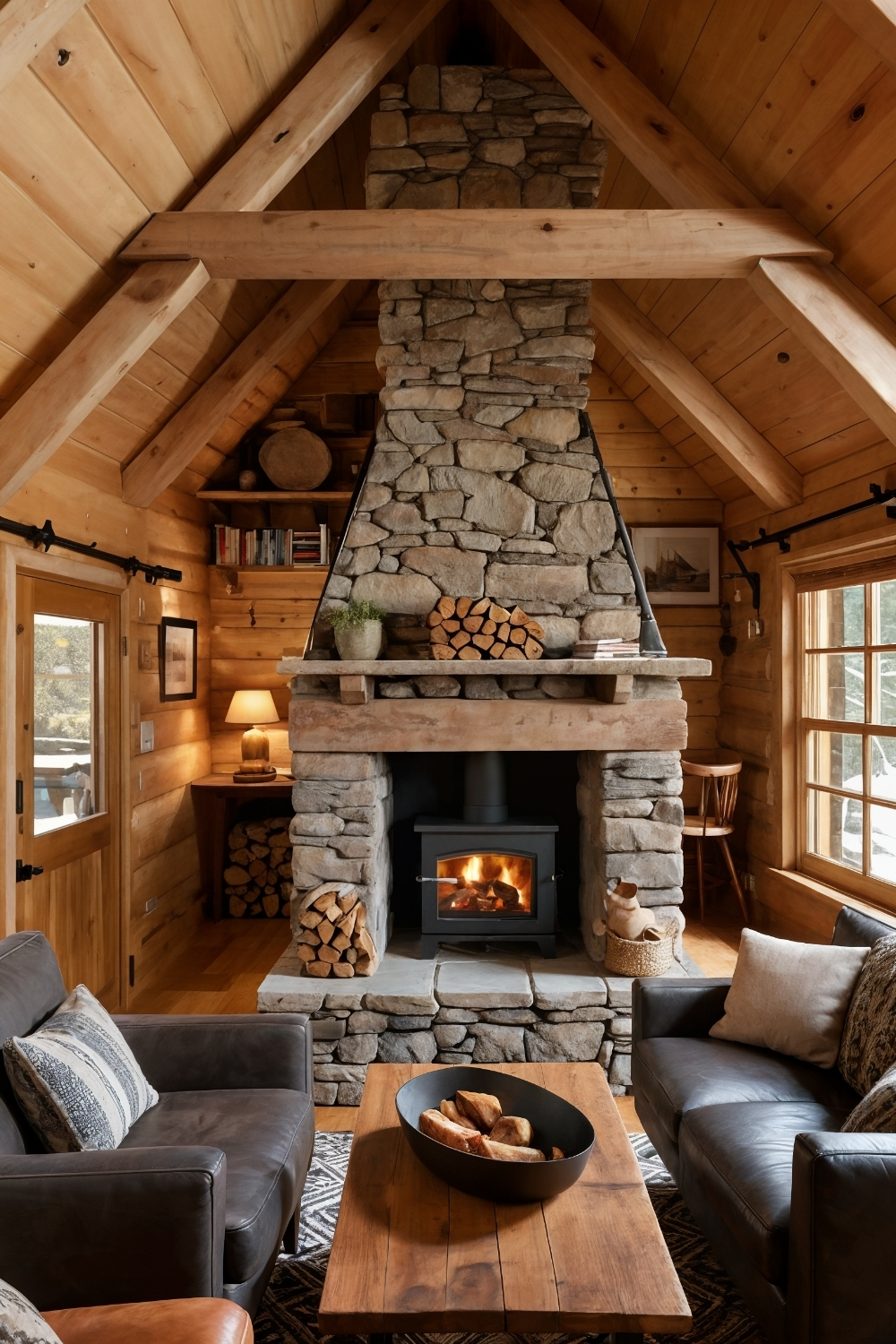
This warmth-centered approach often appeals to homeowners wanting gathering spaces with intimate seating arrangements. Open fireplace installations paired with low-profile furniture typically create the cozy foundation enhanced by exposed structural elements and warm lighting.
Design consideration: Open fireplaces often require proper ventilation and safety clearances while low seating needs comfortable cushioning and durable upholstery.
Practical benefit: Central fireplace design often creates the natural gathering point while providing both heating and atmosphere that defines classic cabin living.
21. Mountain Retreat Luxury
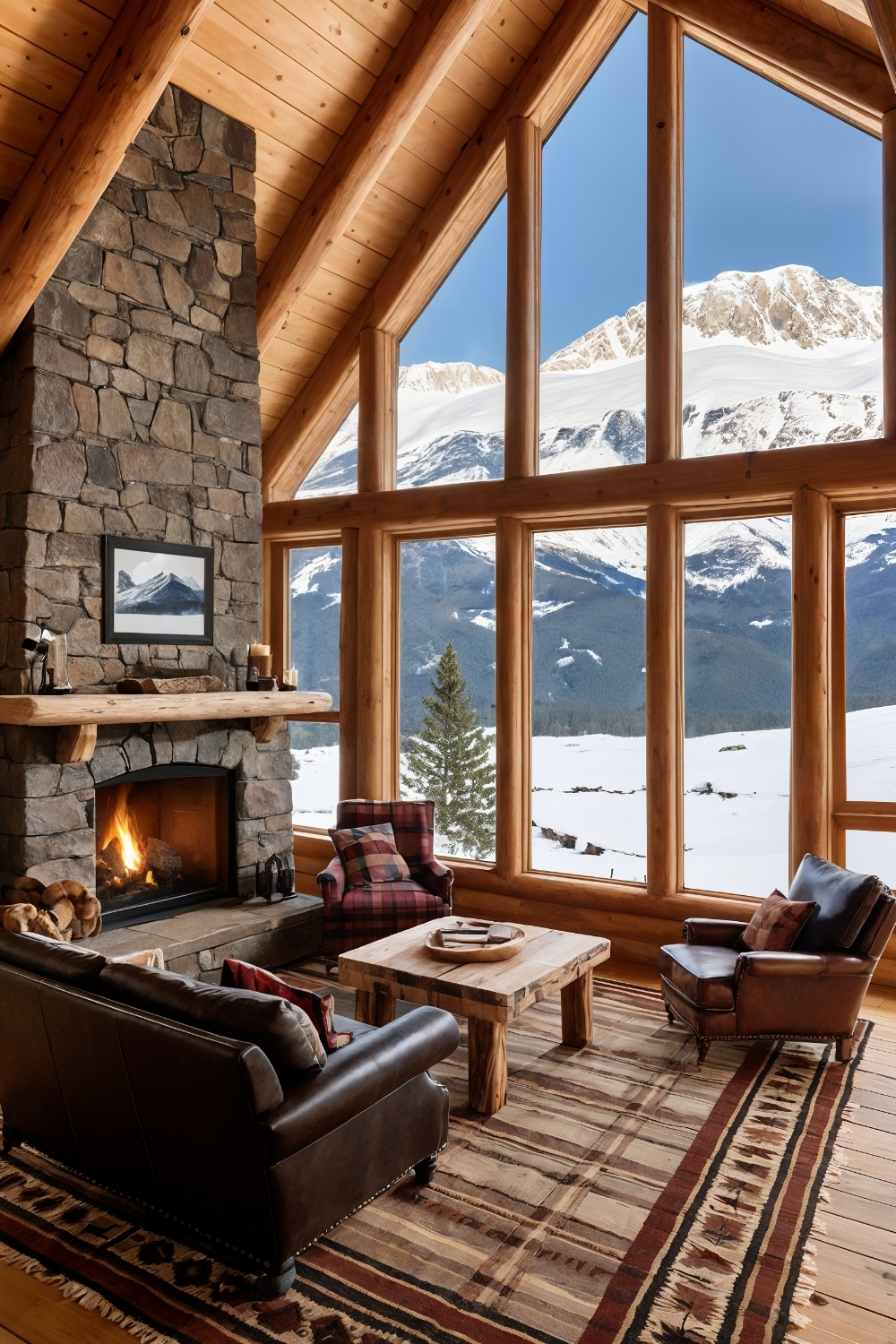
This dramatic approach often appeals to homeowners wanting impressive proportions with rustic luxury elements. High ceiling construction paired with large stone features typically creates the grand foundation enhanced by floor-to-ceiling windows and quality textile selections.
Design consideration: High ceilings often require proper heating strategies while large stone installations need substantial structural support.
Practical benefit: Mountain retreat design often provides the dramatic atmosphere while incorporating luxury elements that create impressive cabin experiences.
22. Indoor-Outdoor Flow Integration
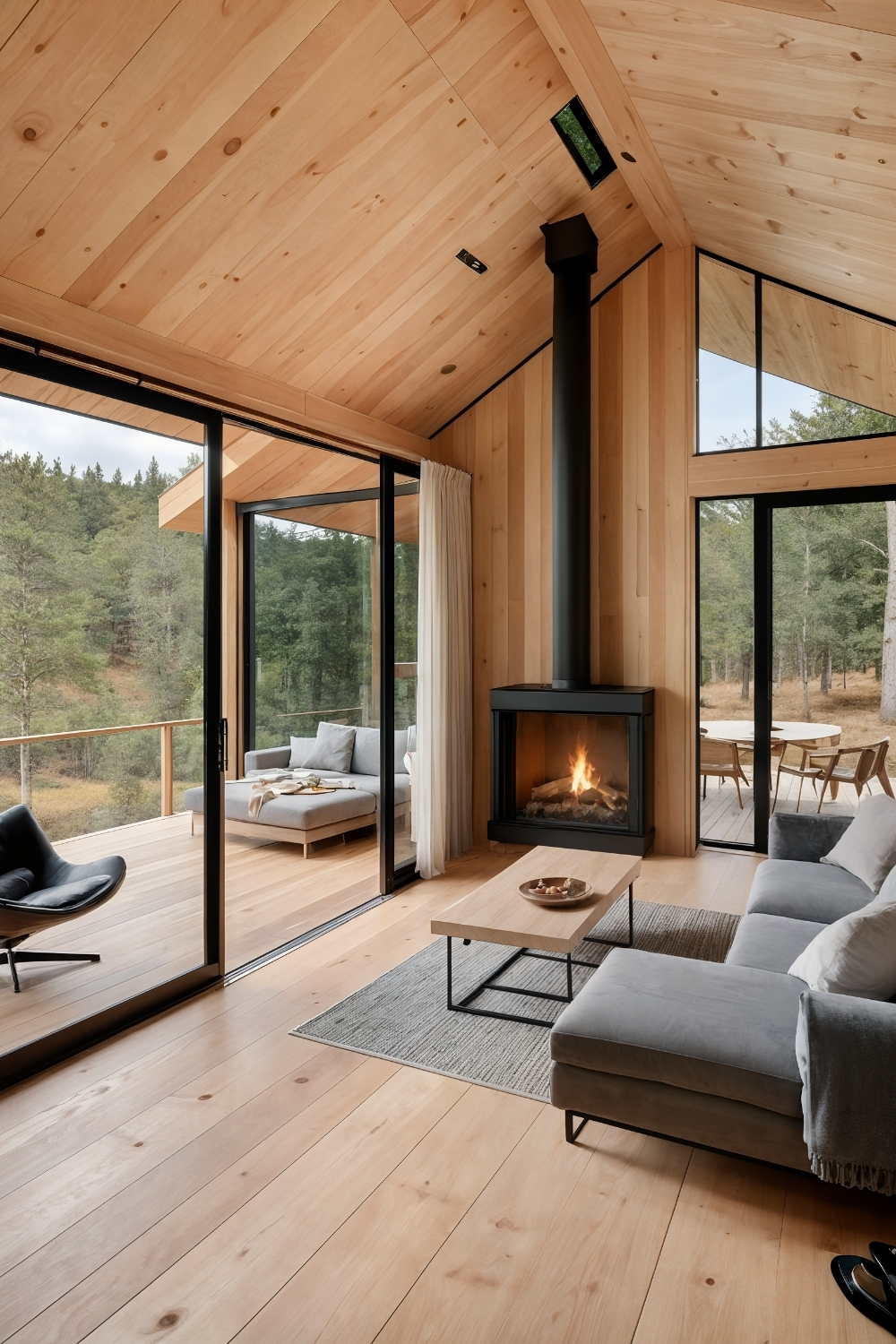
This connection-focused approach often appeals to homeowners wanting seamless transitions with sliding door installations. Minimalist interior elements paired with deck access typically create the open foundation enhanced by built-in heating and light wood finishes.
Design consideration: Sliding glass doors often require proper weatherproofing while deck connections need structural integration and drainage considerations.
Practical benefit: Indoor-outdoor design often extends living space while creating the seamless nature connection that defines premium cabin experiences.
23. Bunk Bed Space Optimization
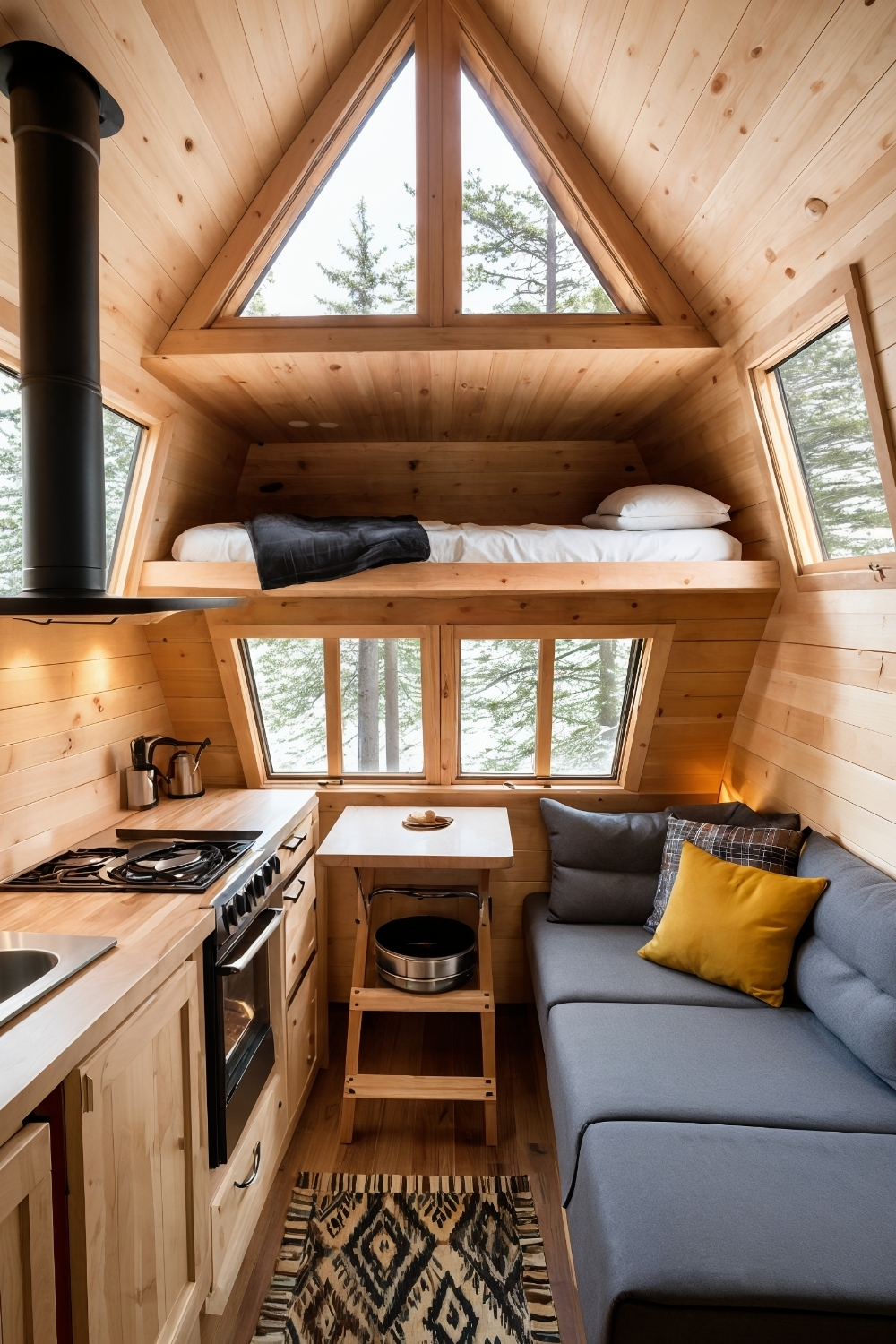
This family-focused approach often appeals to homeowners wanting maximum sleeping capacity with built-in bed solutions. Wall-integrated bunk construction typically creates the efficient foundation enhanced by compact living areas and natural light maximization.
Design consideration: Built-in bunks often require proper ventilation and safety railings while compact living areas need careful furniture scaling.
Practical benefit: Bunk bed design often maximizes sleeping capacity while maintaining living space for family activities and relaxation.
24. Vintage-Inspired Nostalgia
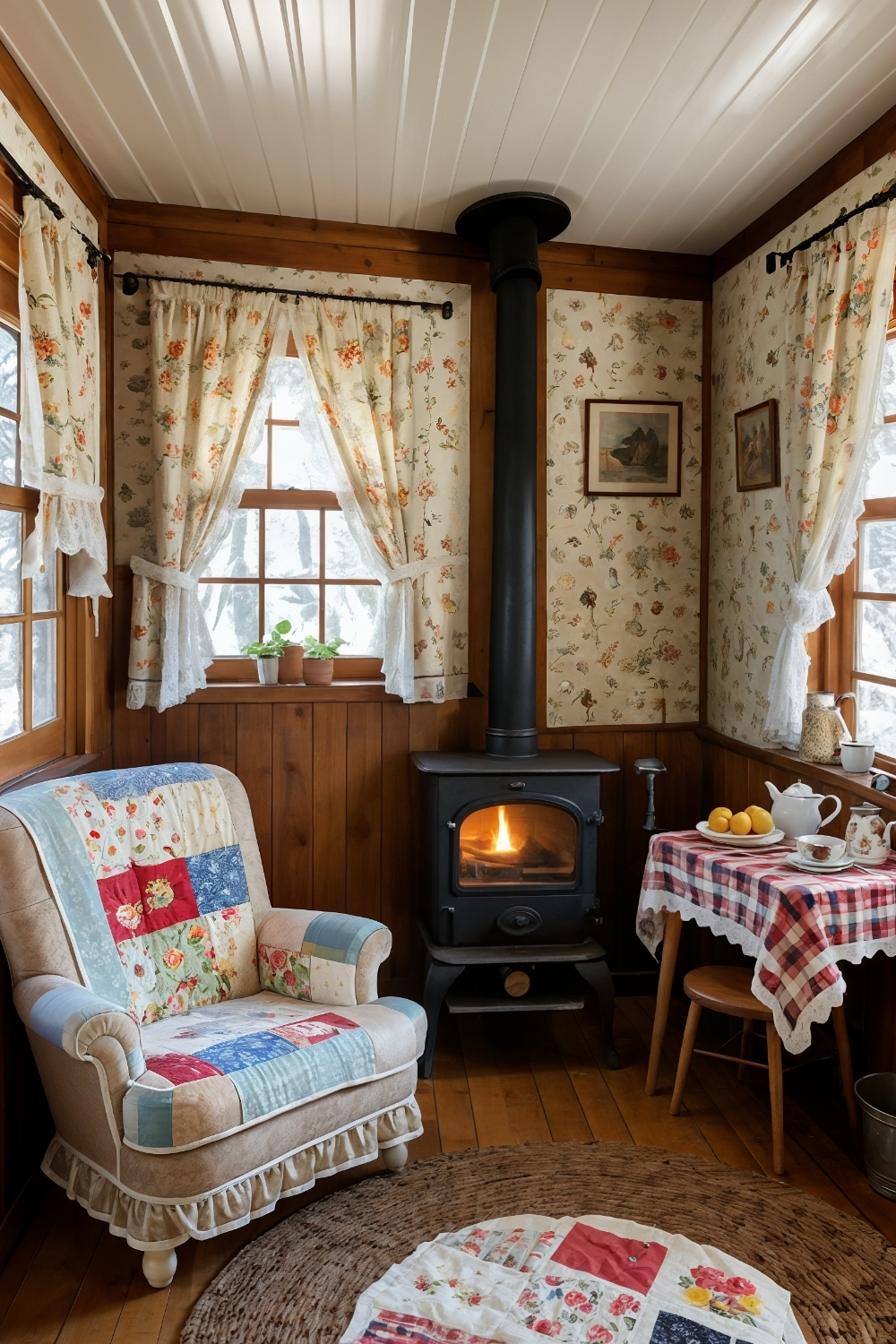
This retro approach often appeals to homeowners wanting period authenticity with vintage appliance integration. Floral wallpaper paired with cast-iron heating elements typically creates the nostalgic foundation enhanced by vintage textiles and warm lighting.
Design consideration: Vintage appliances often require maintenance considerations while period patterns need careful coordination to avoid overwhelming small spaces.
Practical benefit: Vintage cabin design often provides unique character while creating the nostalgic atmosphere that connects with traditional cabin heritage.
25. Skylight Natural Illumination
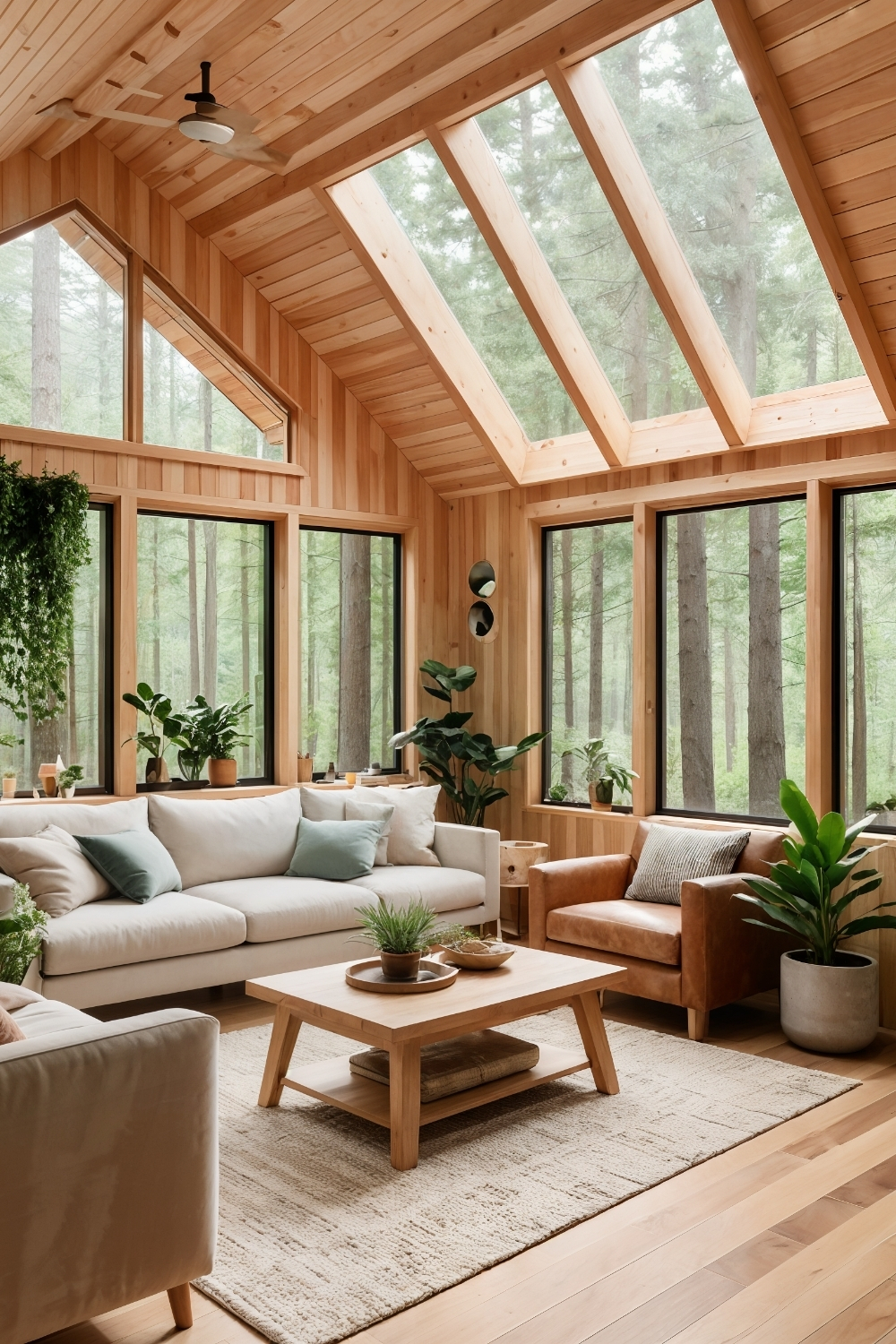
This light-focused approach often appeals to homeowners wanting maximum natural illumination with earthy color coordination. Skylight installations paired with open-concept layouts typically create the bright foundation enhanced by indoor plants and natural material selections.
Design consideration: Skylight installations often require proper weatherproofing and insulation while open concepts need careful heating and cooling planning.
Practical benefit: Skylight design often maximizes natural light while creating the peaceful, nature-connected atmosphere that blurs indoor-outdoor boundaries.
Planning Small Cabin Interiors
When planning small cabin interior renovations, several practical considerations often influence successful outcomes. Space planning typically requires careful measurement and furniture scaling to ensure adequate circulation and functionality within compact footprints.
Heating and cooling considerations often require evaluation of existing systems and may need upgrades for energy efficiency and comfort. Many small cabin projects benefit from professional consultation for electrical, plumbing, and structural modifications that maximize space utility.
Storage planning frequently requires creative solutions including built-in elements, multi-functional furniture, and vertical space utilization. Budget considerations often focus on quality pieces that serve multiple functions rather than numerous single-purpose items.
Building code compliance often requires professional consultation for structural changes, electrical upgrades, or heating system modifications, particularly in small spaces where safety clearances are critical.
Remember: For any structural modifications, electrical work, plumbing changes, or heating system installations related to small cabin interior design, always consult with licensed professionals to ensure proper installation, safety, and code compliance.

